Postcard from Brussels: a maverick design scene has taken root in the Belgian capital
Brussels has emerged as one of the best places for creatives to live, operate and even sell. Wallpaper* paid a visit during the annual Collectible fair to see how it's coming into its own
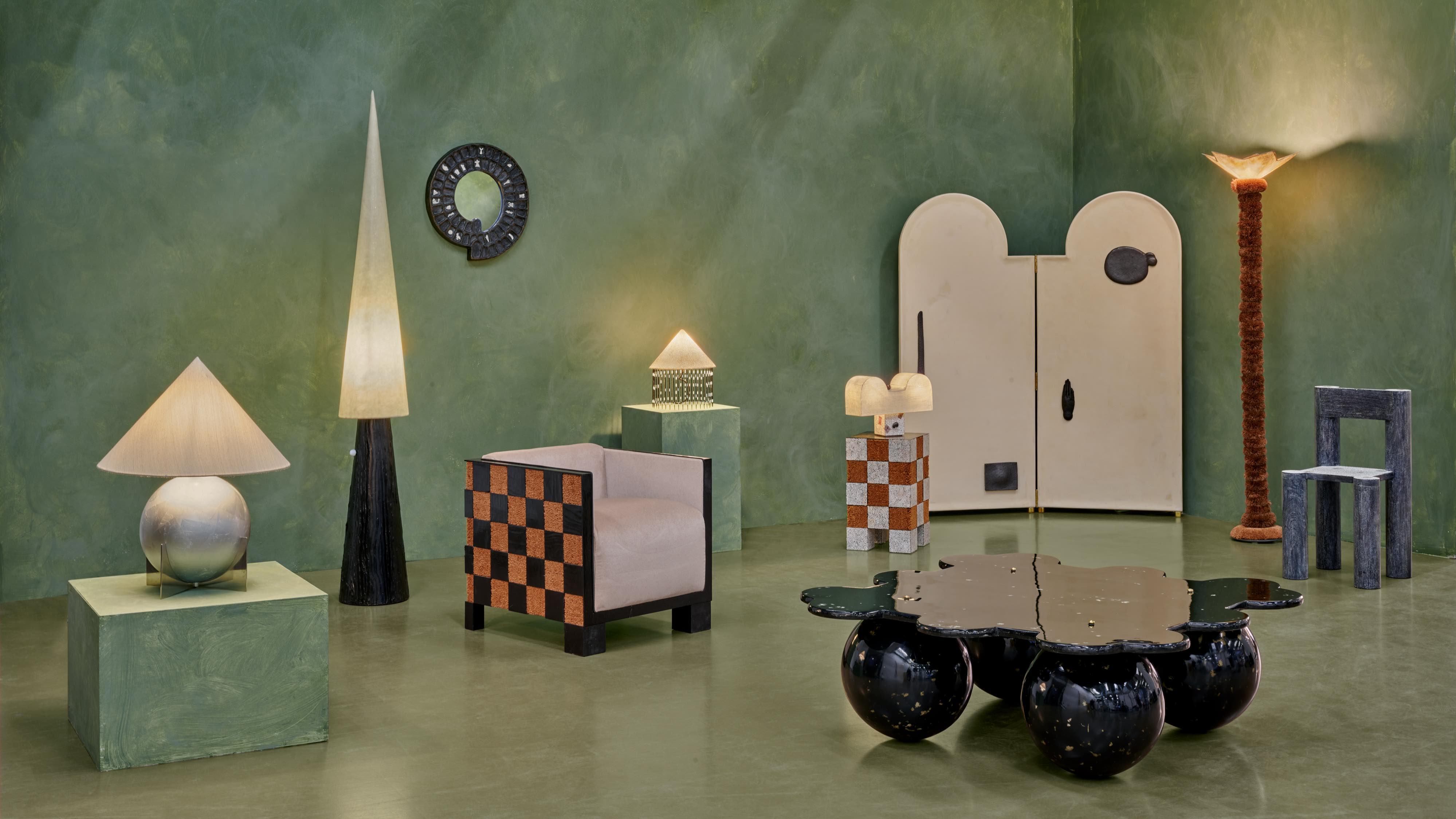
Brussels doesn’t leave the best first impression. The Belgian capital is home to major institutions like the E.U. Commision, Parliament and NATO but also struggles with fractured governance, acute social inequality and a run-down physical appearance (the centre of town in particular).
Straddling the linguistic boundary between Romantic and Germanic Europe – the increasingly autonomous regions of Dutch-speaking Flanders to the north and French-speaking Wallonia to the south –Brussels has a disjointed identity, but that might be a good thing.
Peeling back the layers of a city undergoing yet another chaotic phase of urban renewal – past attempts of which notoriously destroyed a lot of its historic charm in favour of modernisation – one uncovers a thriving creative scene extending from fine art, architecture, design, cuisine and where these domains intersect. Fashion is more of Antwerp's thing, but its influence can be felt here as well to a certain extent.
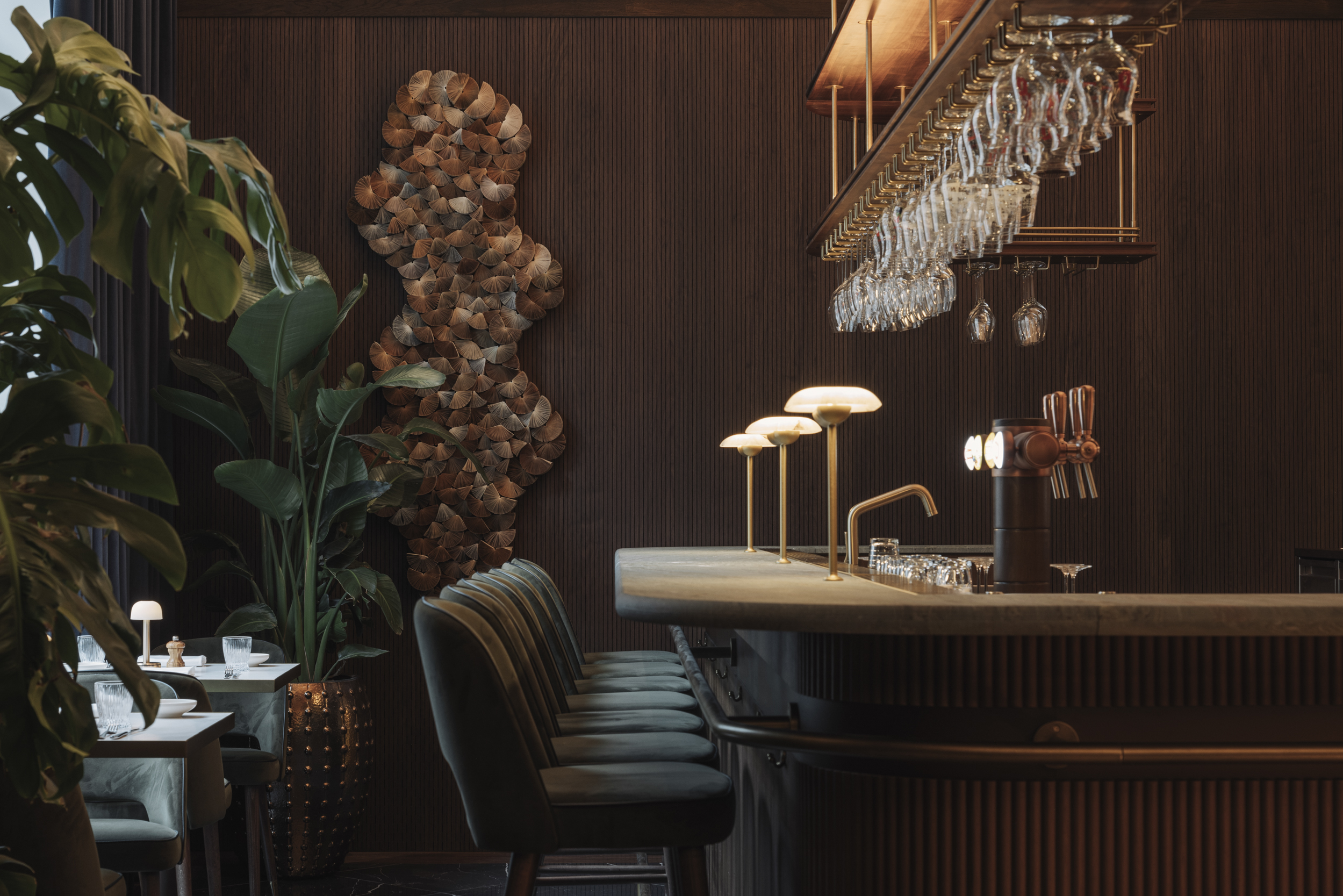
Le Petit Bon Bon is a reimagined Belgian brasserie situated within the recently reopened Belle Epoque-era Grand Hotel Astoria
International hospitality and cultural forces hedge their bets on Brussels
Surprisingly, there's a high concentration of Michelin-star restaurants in Brussels. The latest of which is Le Petit Bon Bon, a reimagined Belgian brasserie situated within the recently reopened Belle Epoque-era Grand Hotel Astoria, expertly restored by Francis Metzger for Corinthia Hotels. This boîte was deftly outfitted by Antwerp-based firm WeWantMore with the aim of elevating the traditional typology in both material and form, echoing the approach chef Christophe Hardiquest took in curating a menu of reformulated local classics.
Other premium hotel chains like The Hoxton and The Standard have also gotten in on the game recently, revamping properties in what has long been viewed as the dingy Northern Quarter. Here as well, Parisian art museum Centre Pompidou is set to open its Kanal outpost in a repurposed Citroën facility.

The Standard hotel is one of several premium hotel chains which has revamped a property in the formerly dingy Northern Quarter
Across the adjoining canal, Tour & Taxis has emerged as a bustling mixed use complex. Its main post-industrial halls play host to internationally renowned fairs like Art Brussels and BRAFA. The innovative all-timber construction Gare Maritime within the complex is flourishing as a tech incubator.
Located in the slightly more upmarket Dansaert pocket of downtown, MAD Brussels is a centralising platform bringing together the city and country’s diverse creative communities with rotating exhibitions and residency programs while serving as a vital resource for those artists and designers just getting started.
Wallpaper* Newsletter
Receive our daily digest of inspiration, escapism and design stories from around the world direct to your inbox.

Brussels-based Armenian architect Noro Khachatryan creates hyper-minimalist and architectonic furnishings
Favourable conditions for independent creatives and collectives
Many of the talents based here are having an outsized impact on the rest of the global art and design industries. What connects them is a sense of irreverence and experimentation. They’ve all set up shop and home in Brussels because of its affordability but also its grittiness. The city presents itself as a blank canvas for them to speculatively revisit time and time again. In many ways, Armenian architect Noro Khachatryan distills this backdrop in his hyper-minimalist and architectonic furnishings.
Unsurprisingly, rent and the outright cost of real estate is much lower than in nearby Amsterdam, Paris or London – major metropolises easily accessed thanks to robust rail links. This makes operating large studios much easier. Khachatryan maintains a sizable space in the burgeoning, once perceivably dangerous, Molenbeek neighborhood.
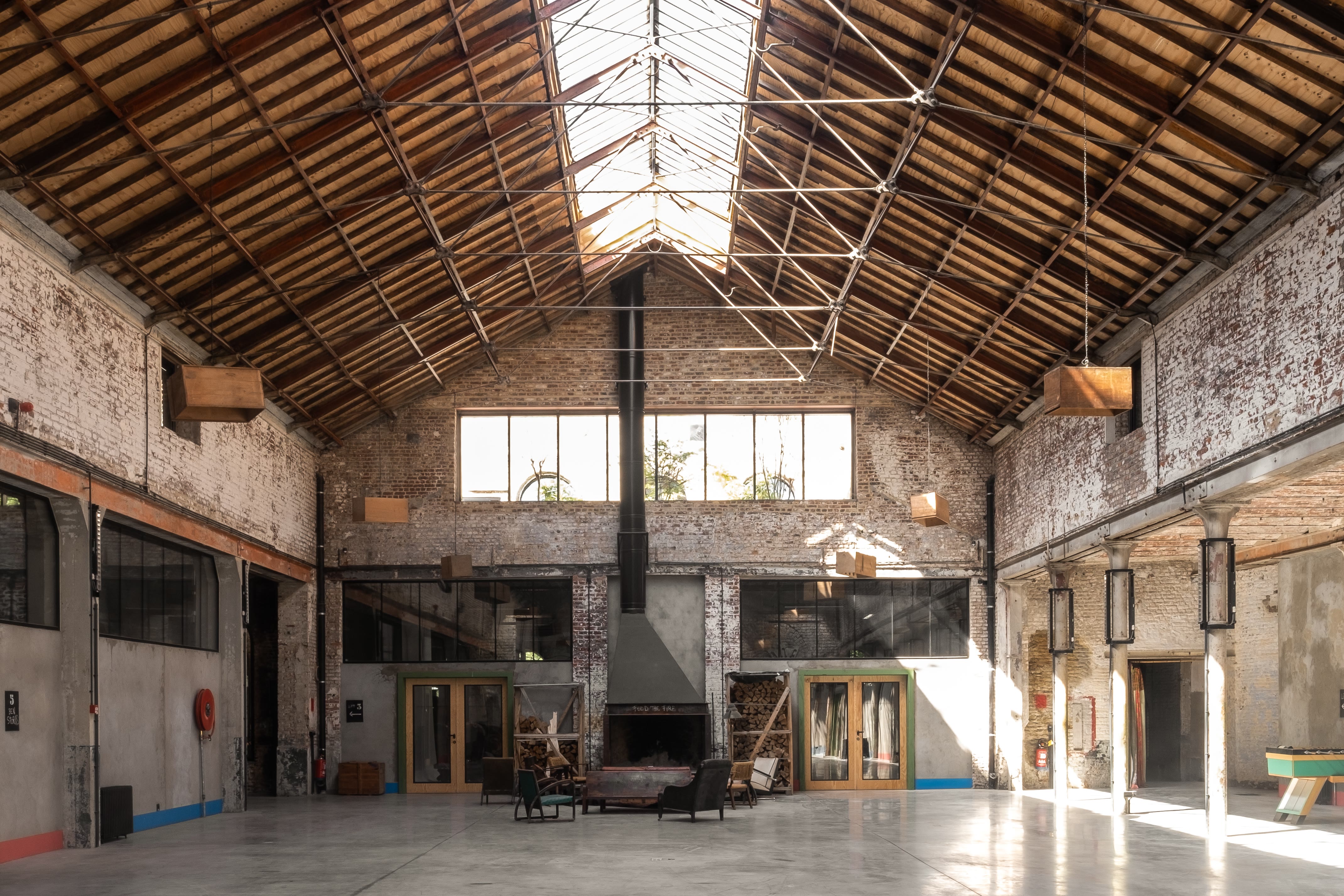
Zaventem Atelier is a collective design platform situated in a sprawling former factory along the outskirts of town
Also in the area, Asifose is a new hub comprising large exhibition and studio spaces intertwined and forged out of derelict buildings. This collaborative entity was established, in part, by the collective Espace Aygo, which embodies the ad-hoc, 'anti-design' mindset popular at the moment. Having spearheaded this movement in many respects, Brussels-based Arnaud Eubelen is known for configuring dynamic furnishings out of 'raw' industrial materials sourced from construction sites. Headed up by renowned industrial designer Lionel Jadot, Zaventem Atelier is yet another collective platform situated in a sprawling former factory along the outskirts of town. The organisation fosters interdisciplinary exchange amongst its varied members: sculptors, furniture designers and scenographers.
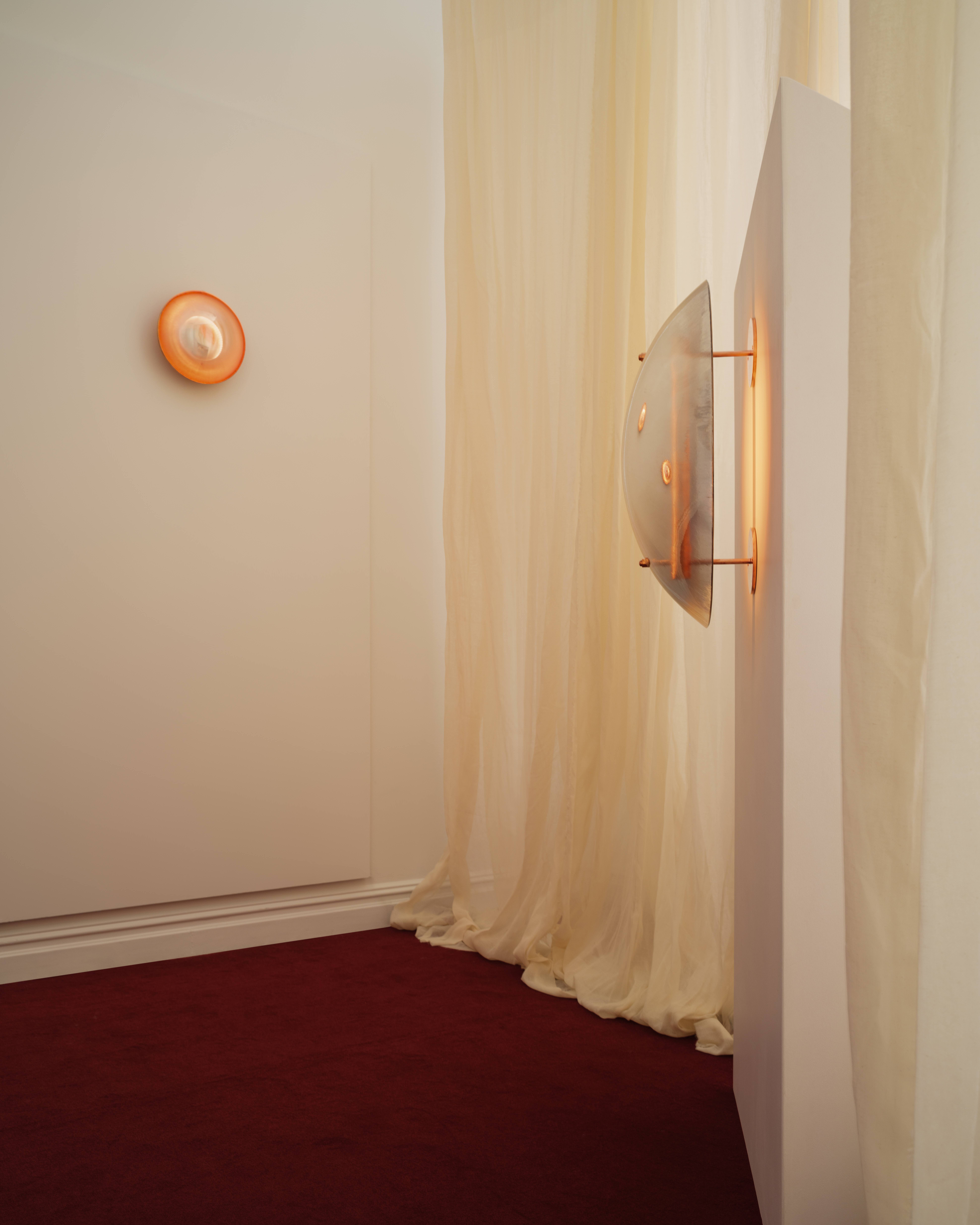
Nel Verbeke is a Design Academy Einhoven Graduate who has forged a research-based design studio in the city. She recently debuted her ethereal and format-defying Mirror at New York’s Emma Scully Gallery
While the pace of life in Brussels is slower, its artistic output and spirit of future-forward thinking matches and even exceeds that of the boisterous megacities in its midst. This is especially true from an avant-garde standpoint – a tradition deeply rooted in this identity-less city, one unconstrained by the easily co-opted historical and homogenised tropes that often pigeon-hole specific places. It’s no surprise that Brussels has long been a bastion of surrealism and alternative forms of expression.
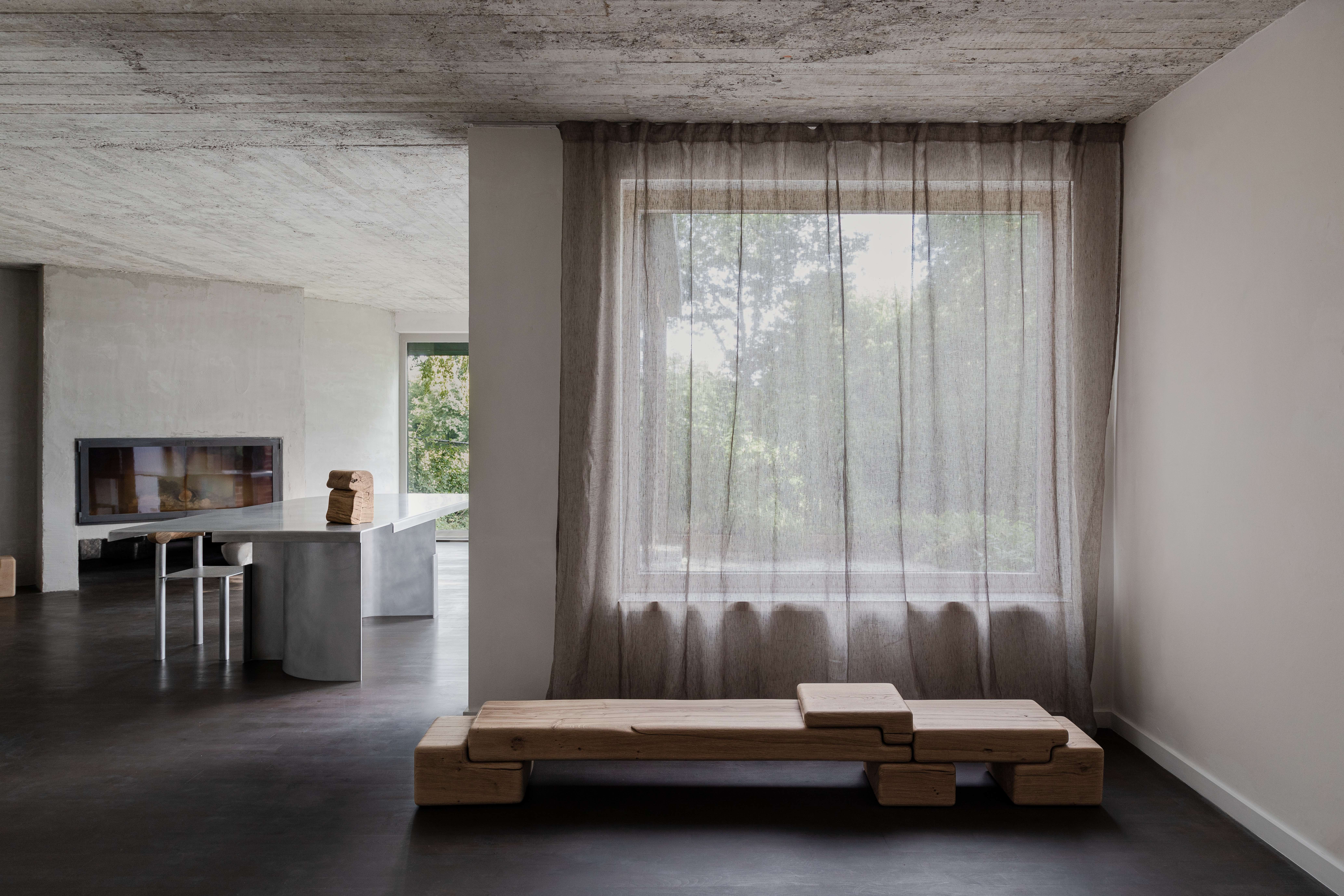
Linde Freya Tangelder – the force behind wildly successful studio Destroyers / Builders – moved her studio to a modernist home within Brussels’s northern suburbs in 2023
For those designers that have moved here in the past few decades, the influence of the world-renowned Design Academy Eindhoven – just an hour and a half’s drive away – is also palpable. The school's authoritative culture of material exploration and conceptual ideation permeates many of these practices. Graduates like Maarten de Ceulaer have long been fixtures of the city's ever-emerging scene. Recently debuting the ethereal and format-defying Mirror at Dusk collection at New York’s Emma Scully Gallery, Nel Verbeke has forged a research-based and zeitgeist responsive methodology all her own. Dutch designer Linde Freya Tangelder – the force behind wildly successful studio Destroyers / Builders – moved her studio to a modernist home within Brussels’s northern suburbs in 2023.
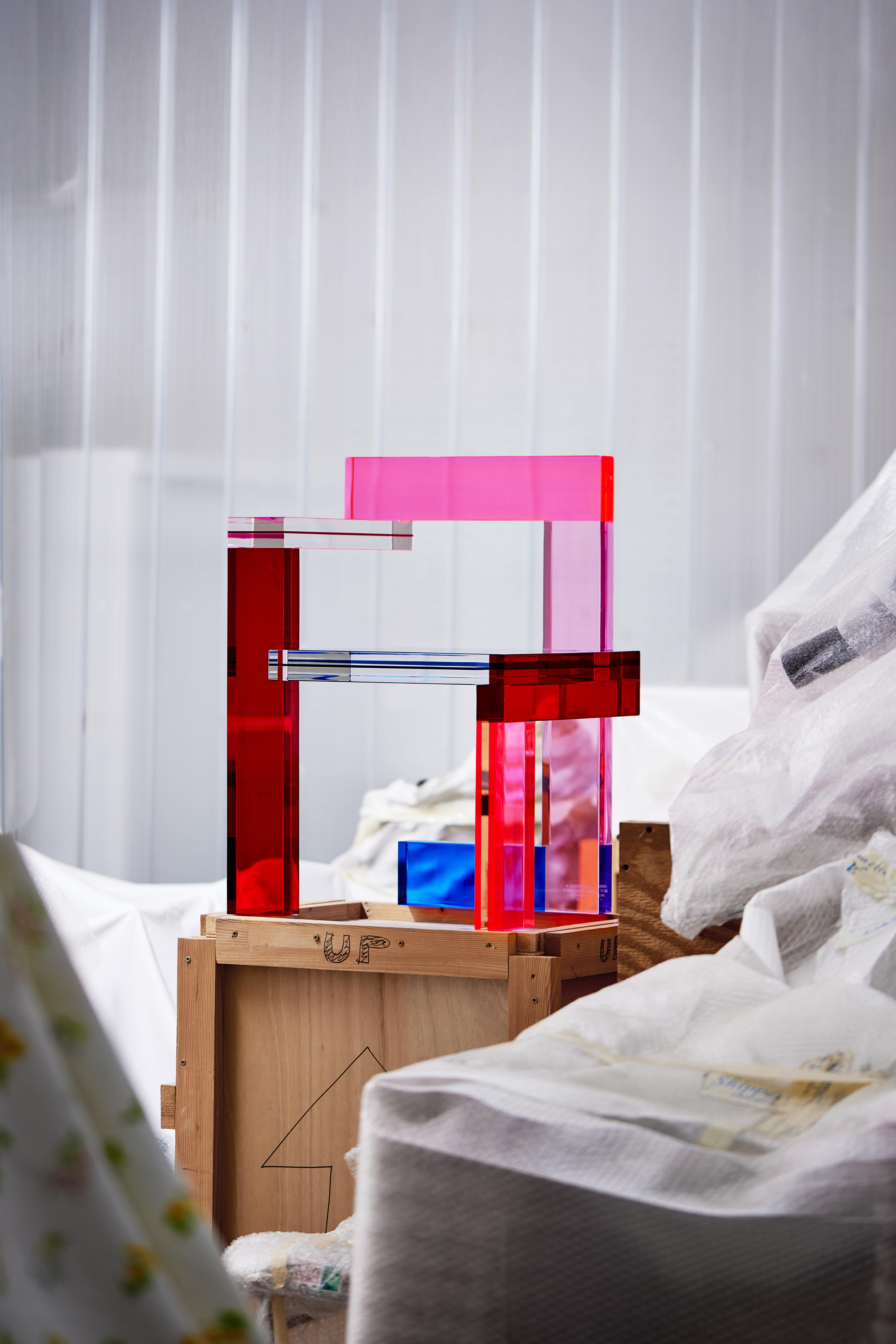
MAD Brussels unites the city and country’s diverse creative communities through rotating exhibitions and residency programmes. On show until May is a selection of chairs from the private collection of Galila Barzilai Hollander. Pictured: ‘A chair mod. Post-Steltman’ by Alessandro Guerriero.
Emerging galleries and fairs with an interdisciplinary mindset
There’s also a booming, if somewhat concealed, art market here. Among private collectors – including French elites that have relocated to posh neighbourhoods like Uccle and Ixelles for favourable wealth tax policies – are a slew of recently established private and public-facing galleries, located in well-preserved Art Nouveau townhouses and Art Deco mansions.
Amongst those specialised in collectible design are Spazio Nobile and MANIERA. While the former considers the historic definition of the applied arts as a more unifying categorisation of what's being put out into the world today, the latter commissions architects to develop visually and formally captivating furnishings. With a broad roster of notable talents between them, both look to challenge disciplinary conventions. Emphasising the ever-blurring distinctions between design and art even further are the Boghossian Foundation Villa Empain – also situated in a grand historic home – and new venture Darwin 15.
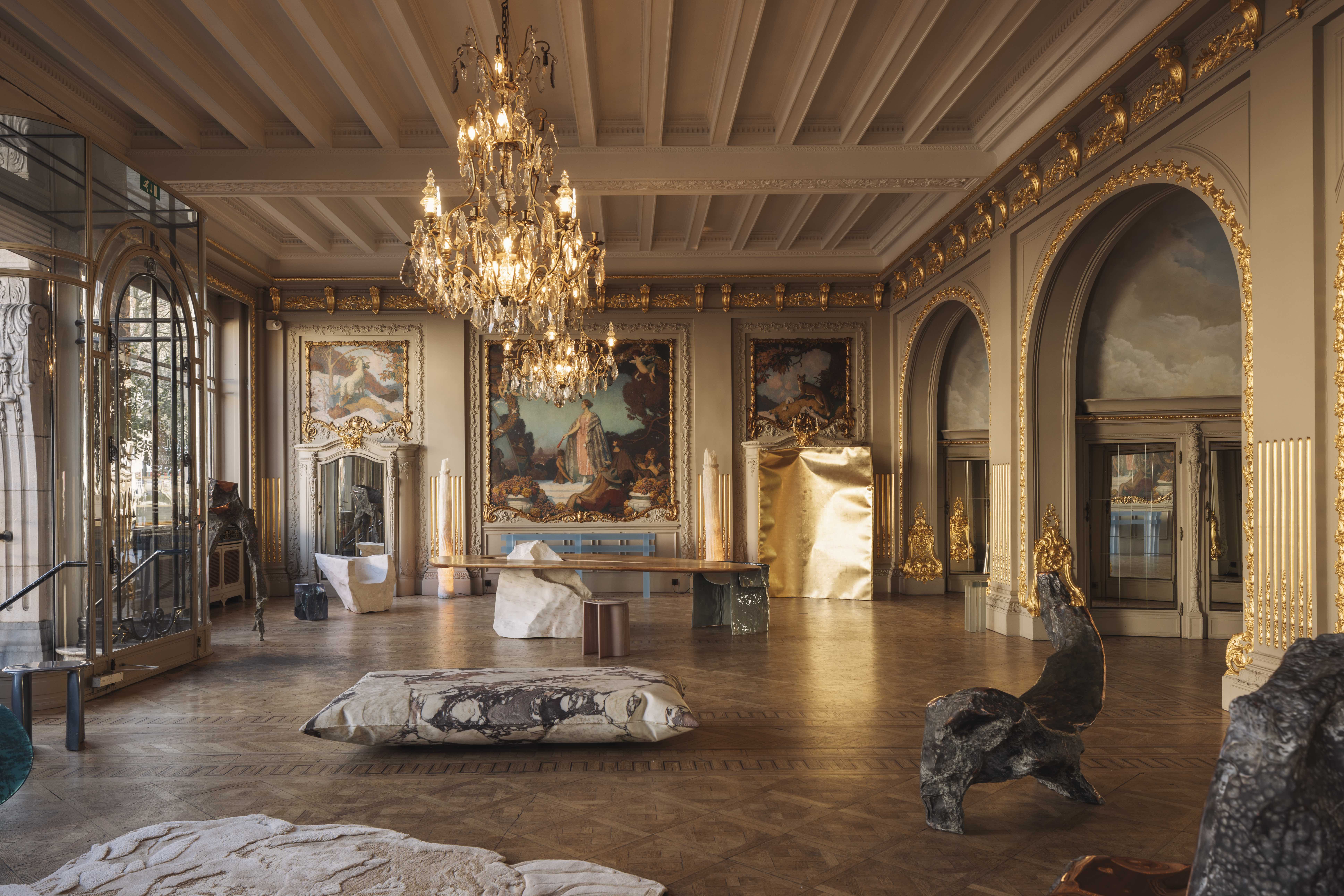
Located in an ornate 'baroque-style ballroom', Objects with Narrative is a recent addition to Brussels's raft of distinct design galleries
Objects with Narrative is a recent addition to Brussels's raft of distinct design galleries. Located in an ornate 'baroque-style ballroom' along the chic Sablon square and massive loft levels above, this platform looks to support a wide range of contemporary talents pushing material forward and seeking to imbue their works with succinct storylines.
Anchoring all of this is the annual Collectible fair, held this year from 13 to 16 March. Bringing together an international roster of maverick galleries, edgy firms, and innovative independent practitioners, the fair prides itself on presenting only 21st-century design. Like Brussels itself, it isn’t mired in history – even if history is present – but instead spotlights those talents endeavouring to shape the future.
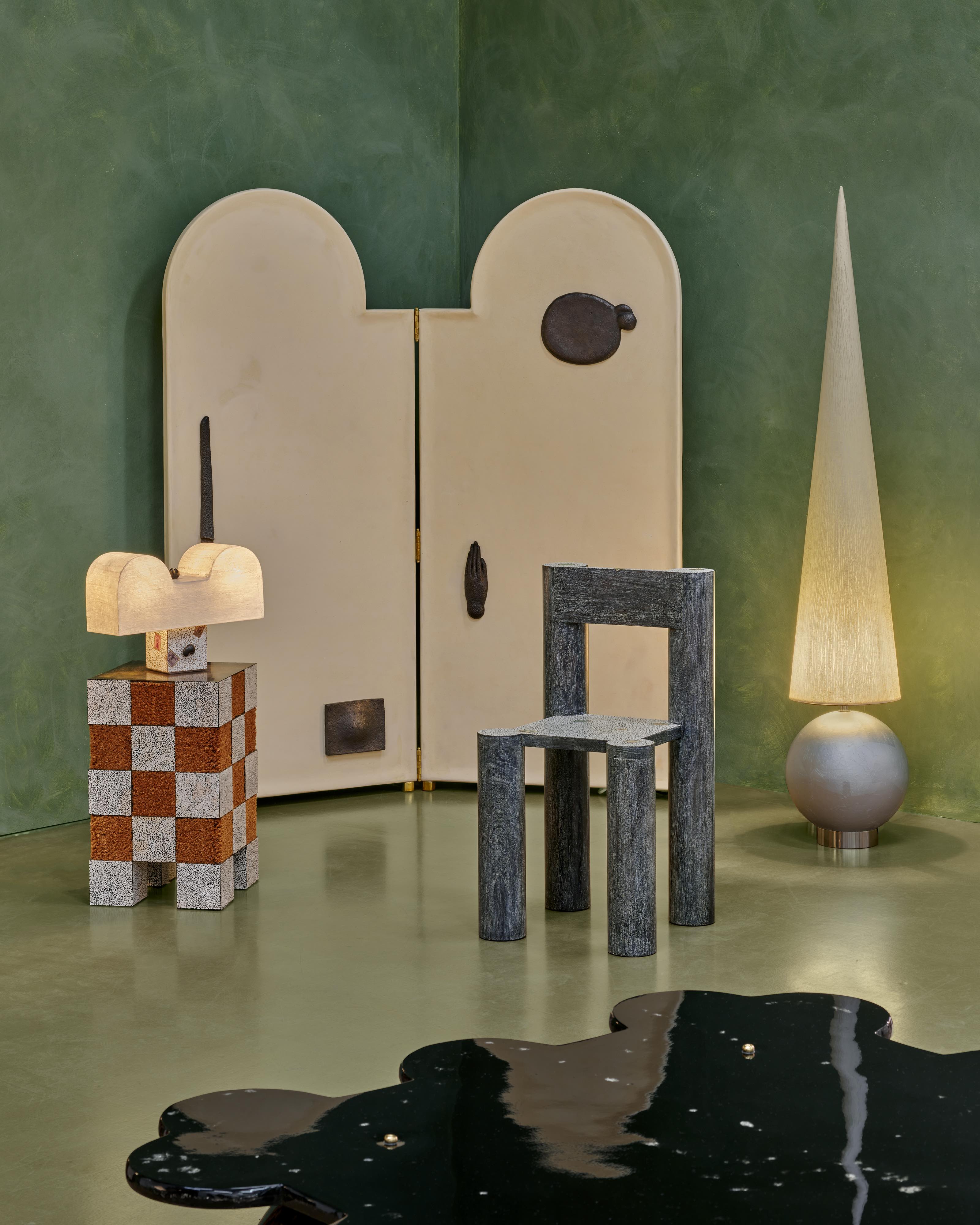
Domum at Collectible 2025
Highlights this year included Onlyonly Studio’s Daydreamer chaise lounge produced in natural latex and stainless steel. Antwerp-based fibre artist Nathalie Van der Massen presented a number of woven wall pieces and foldable room dividers with curator Stéphanie Fredrickx, hinting at the industry’s growing desire to reassess this age-old medium.
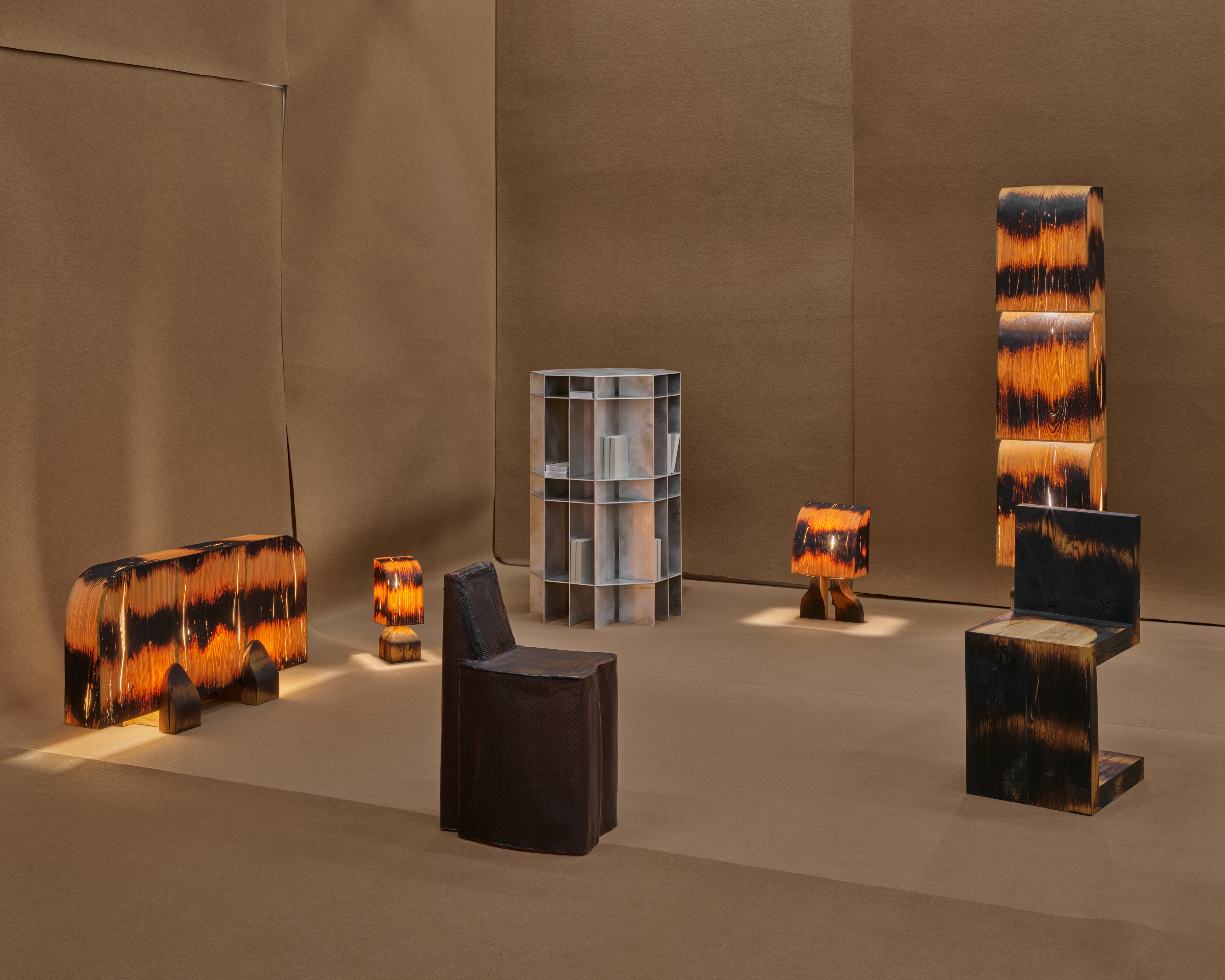
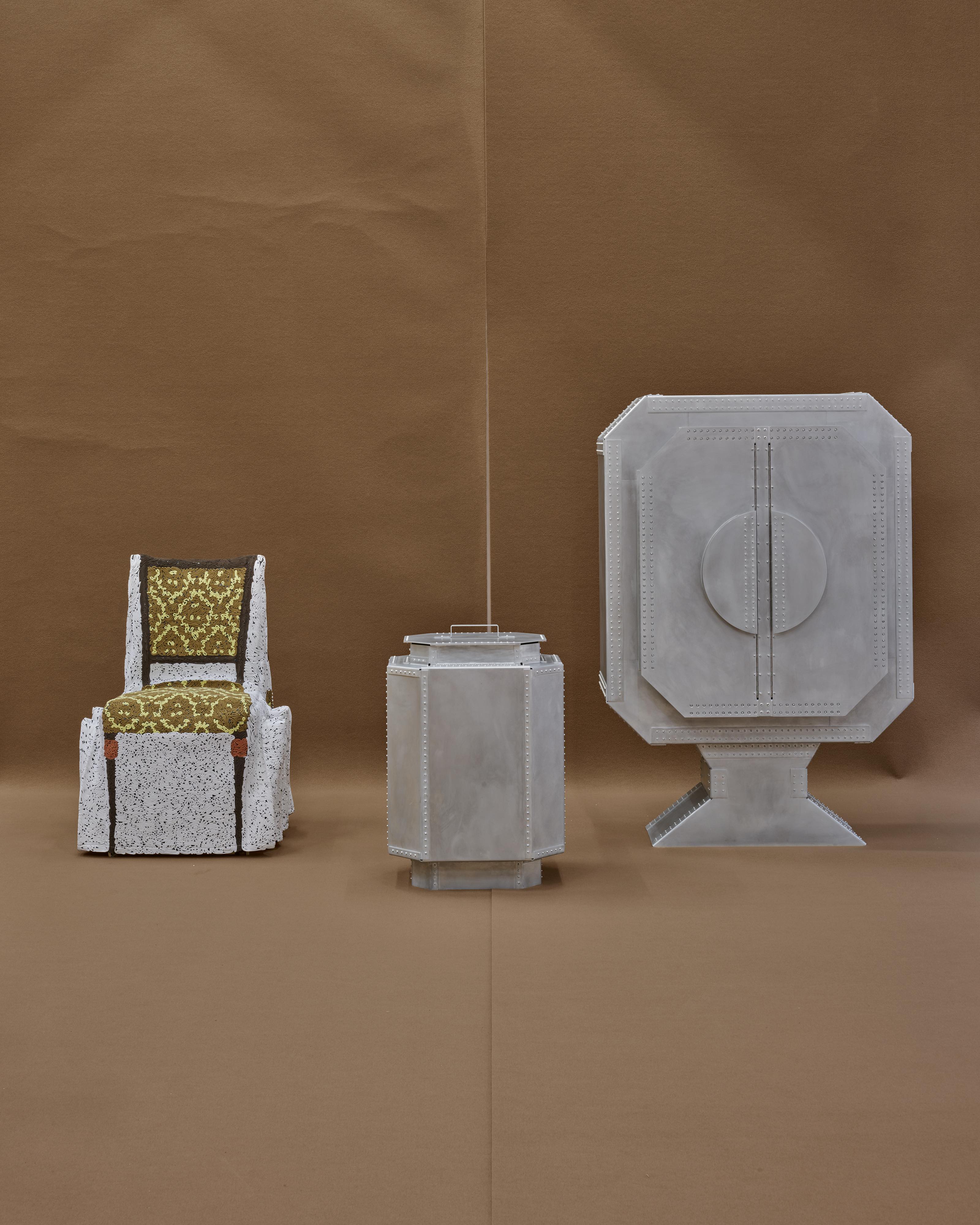
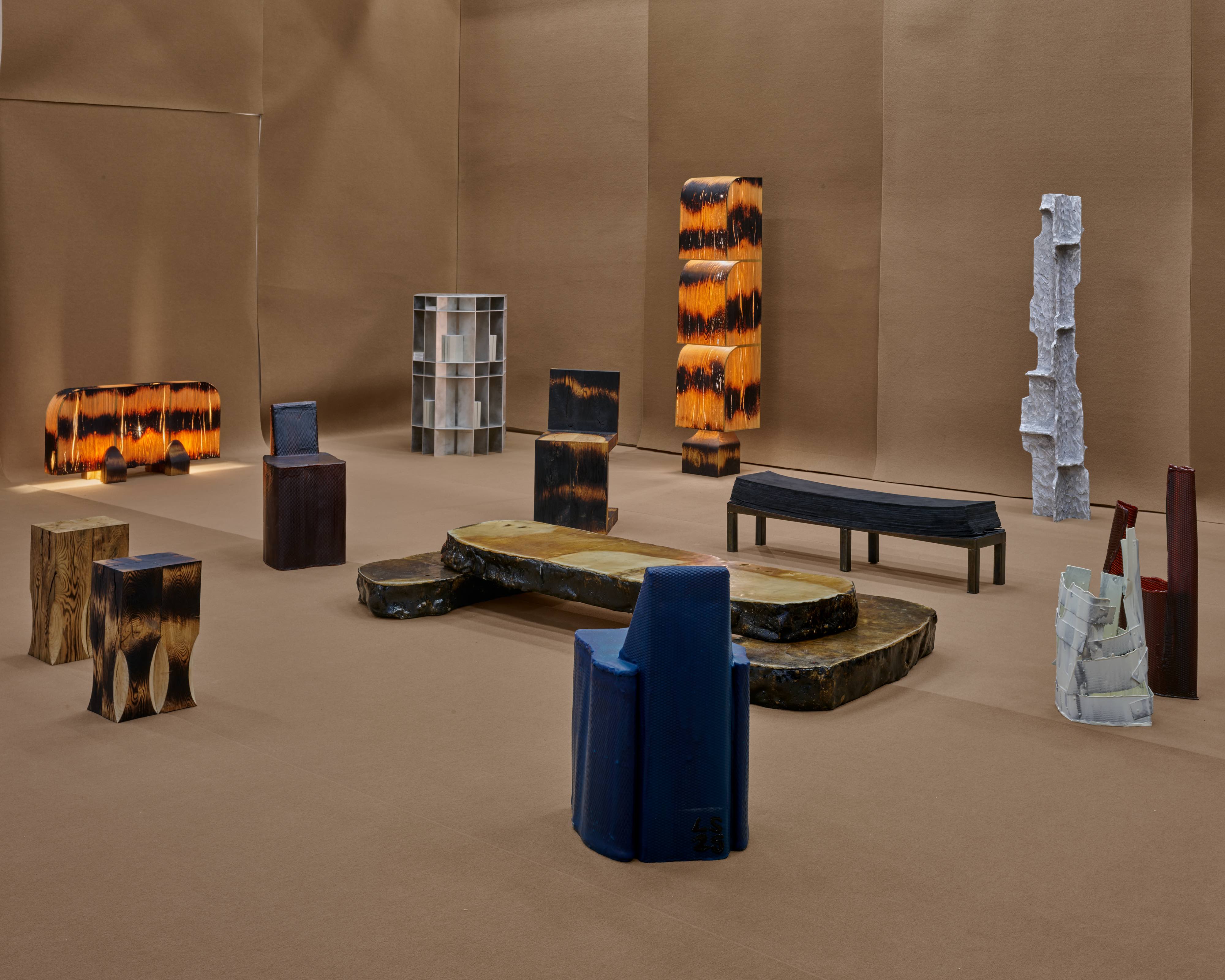
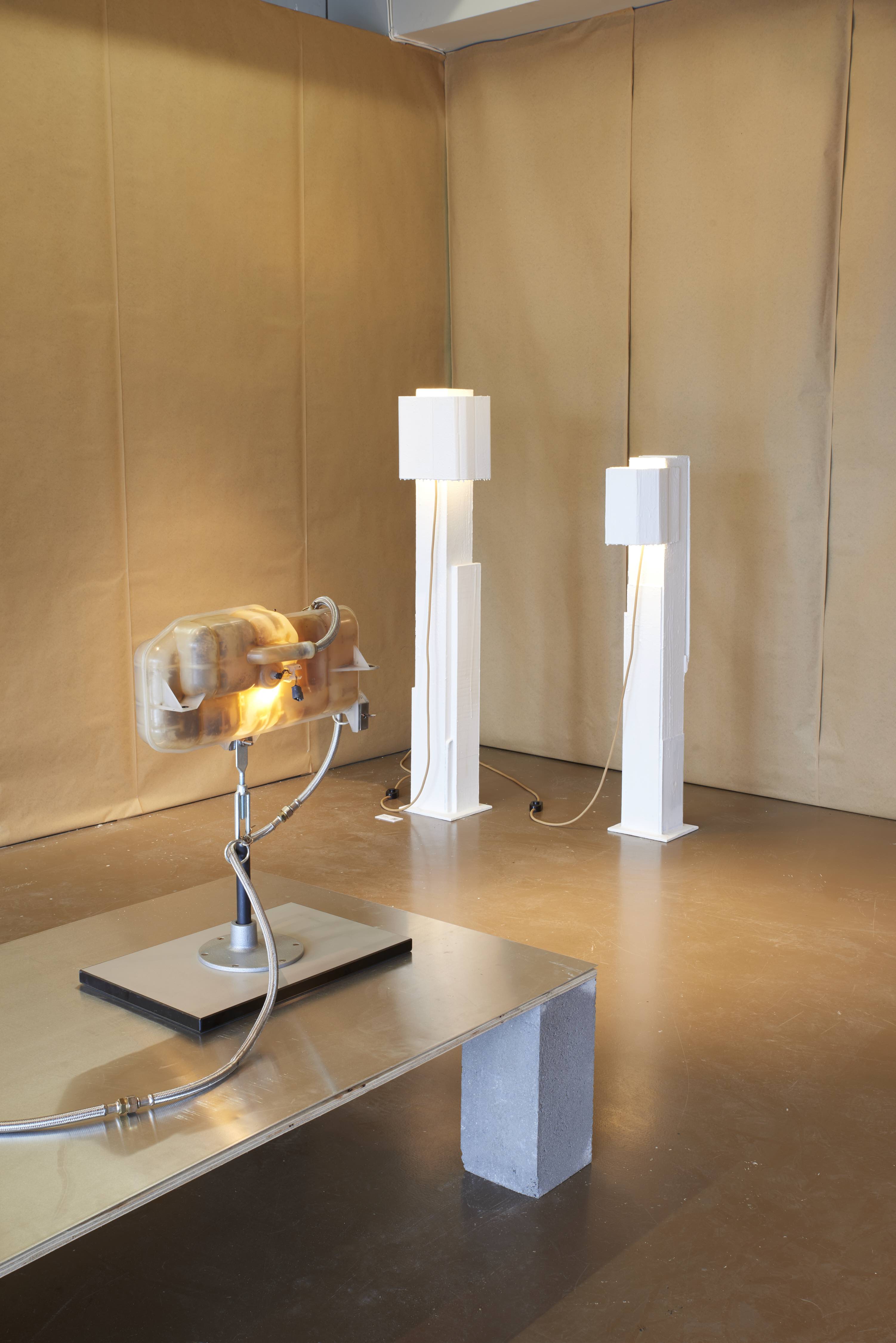
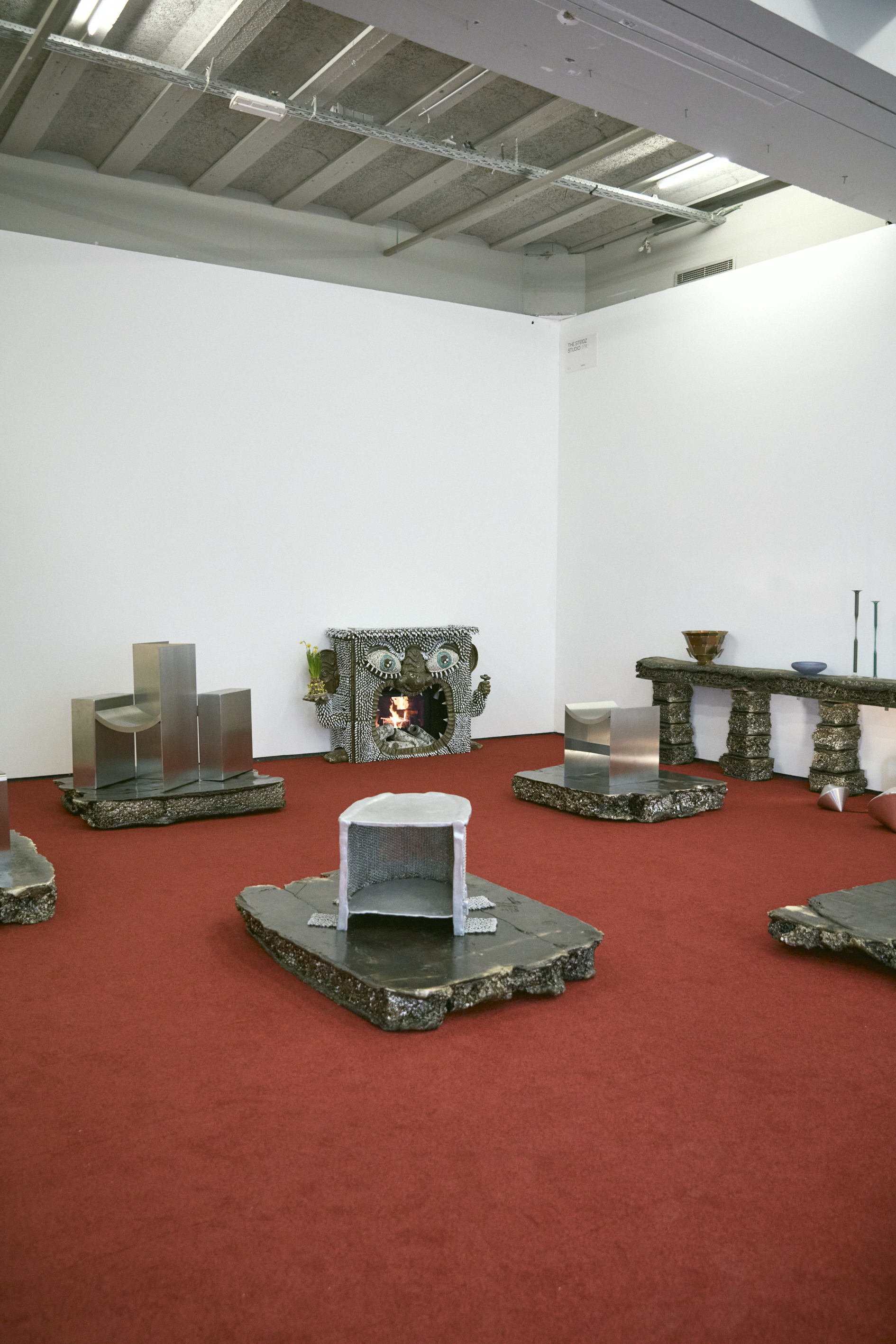
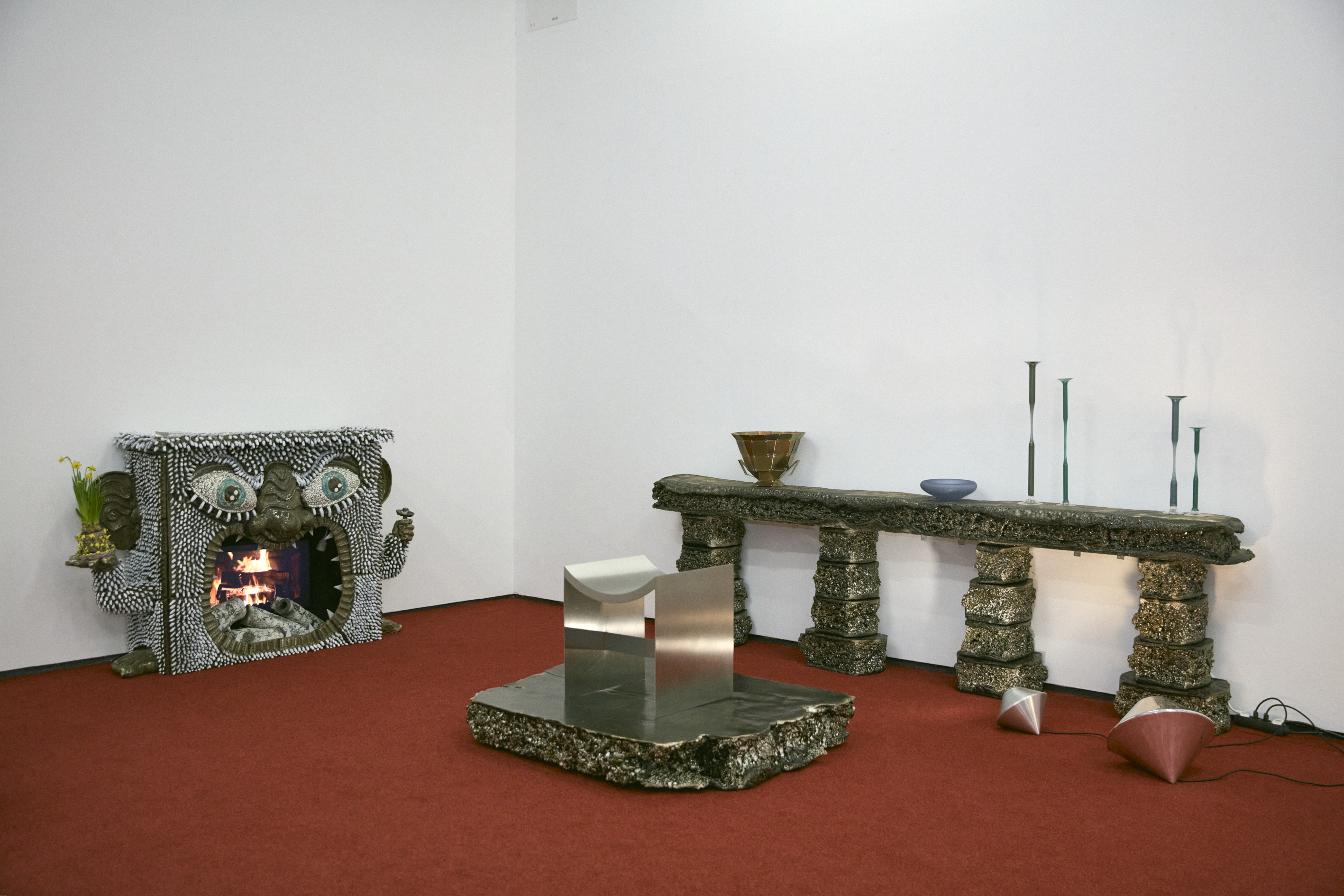
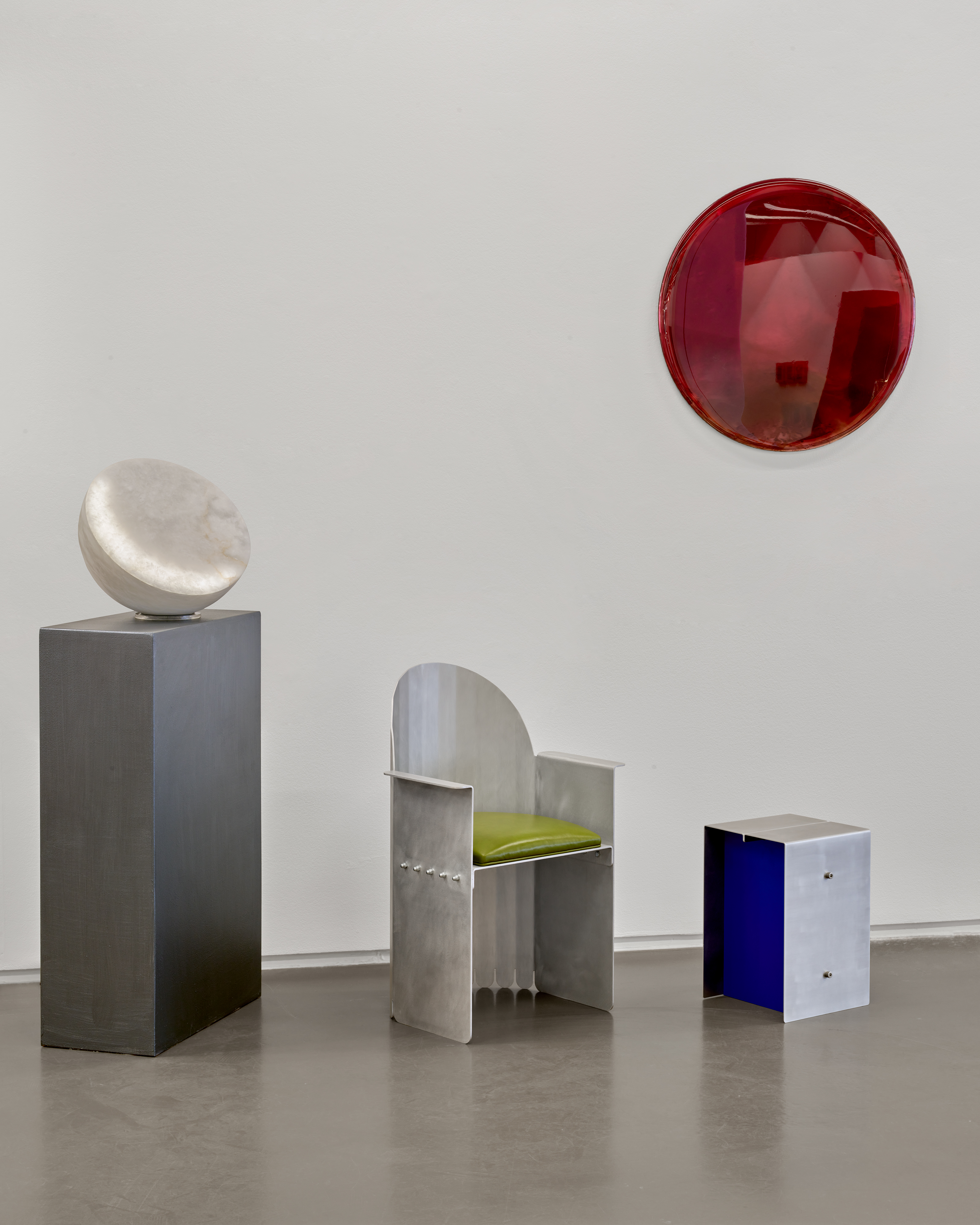
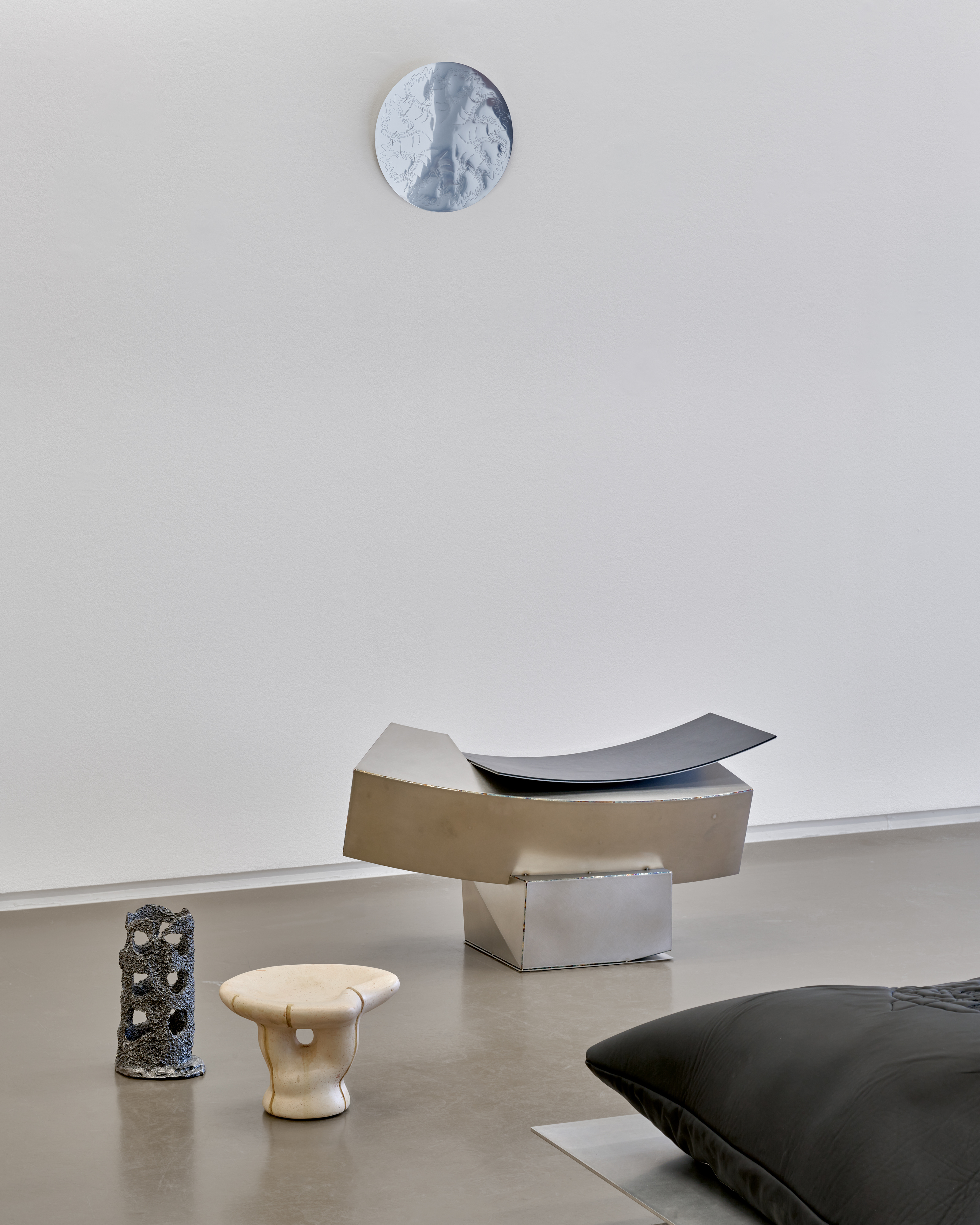
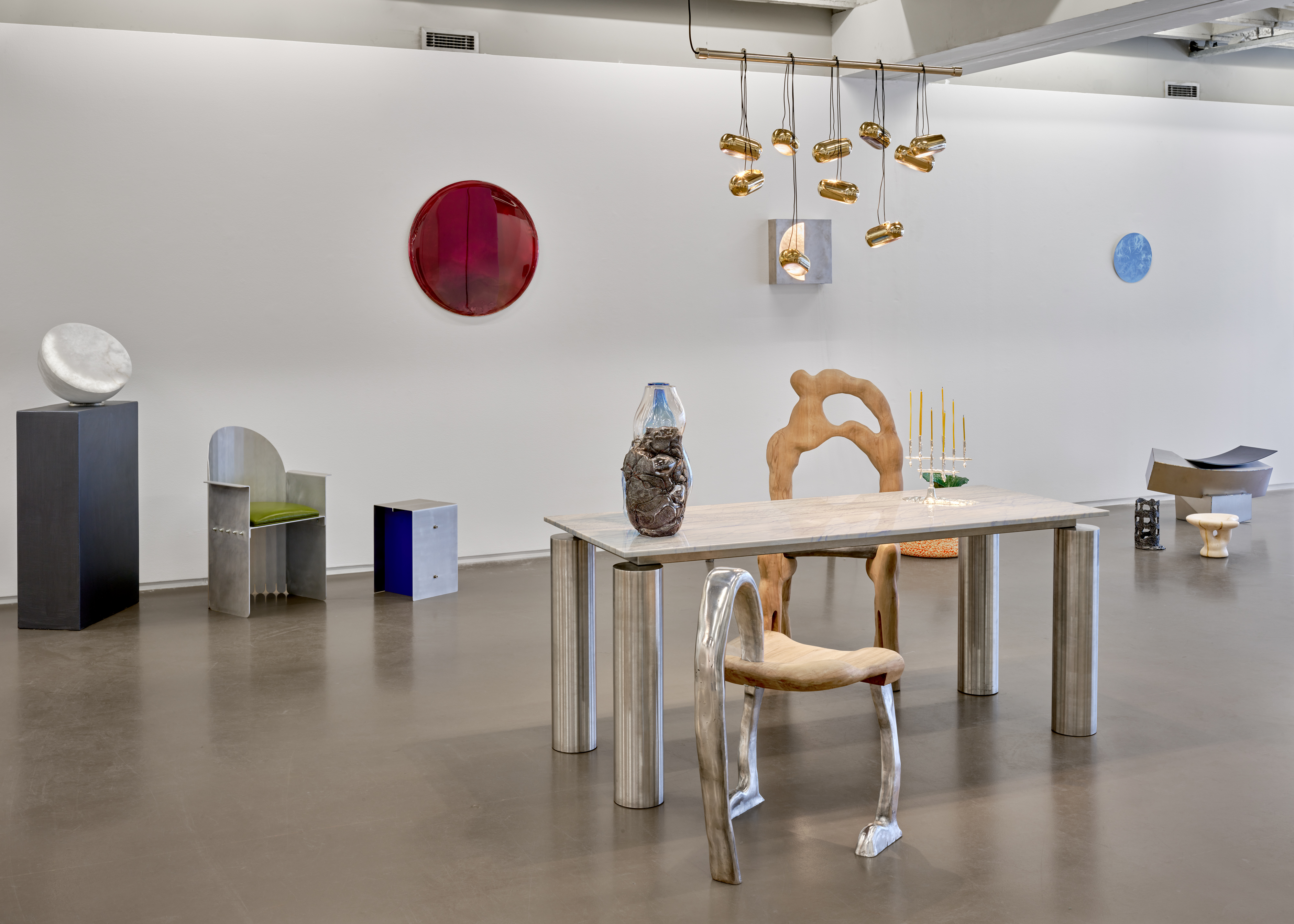
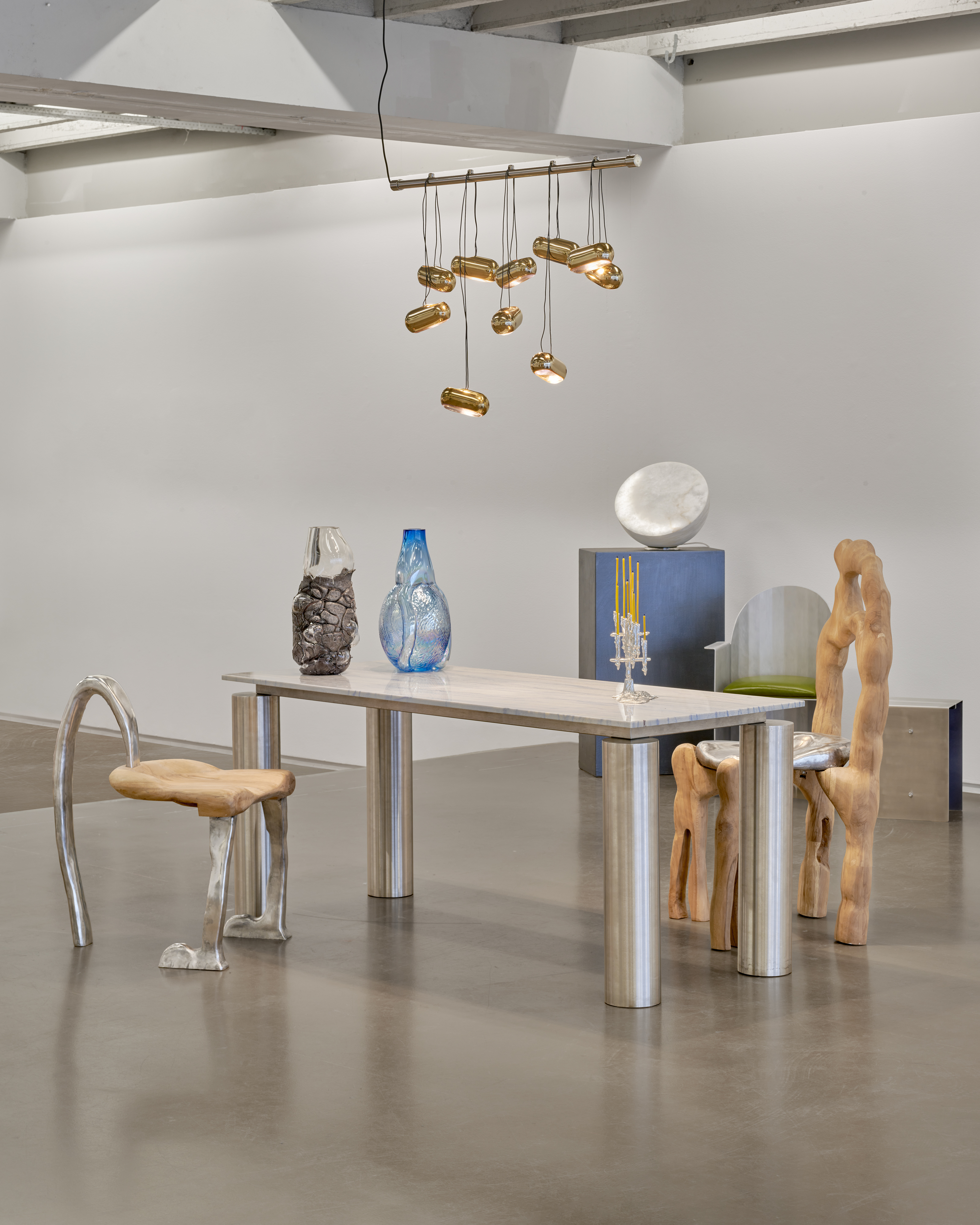
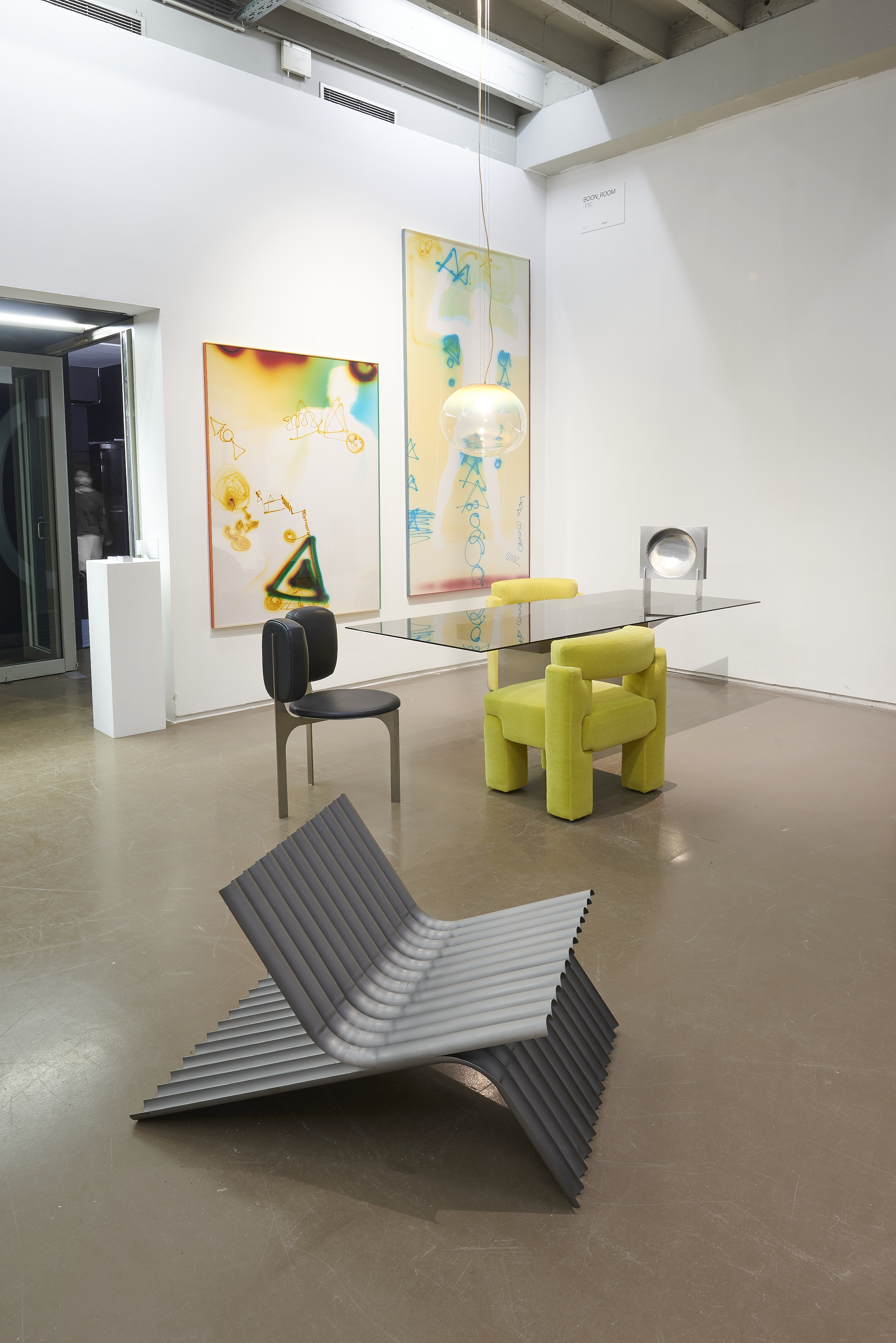
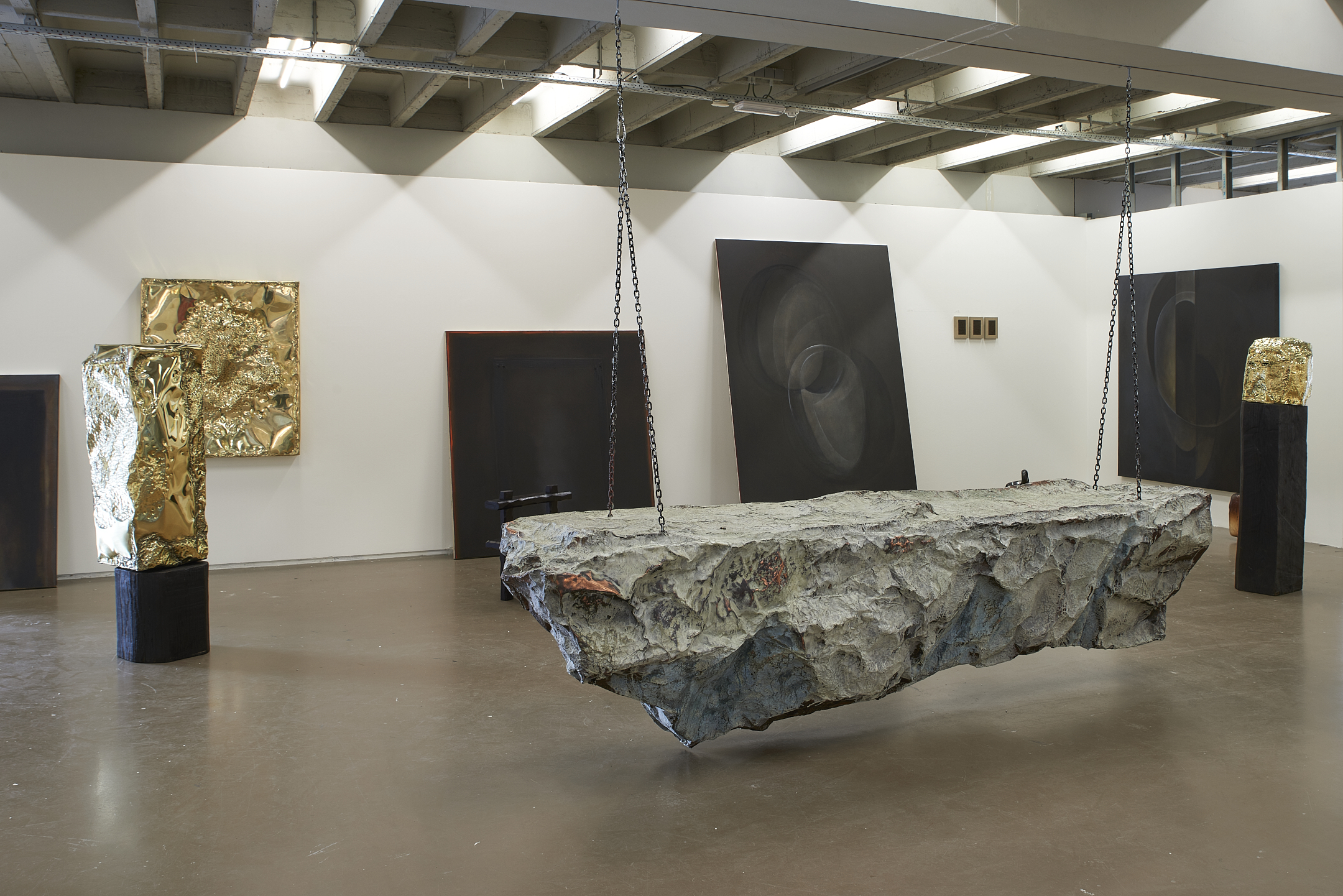
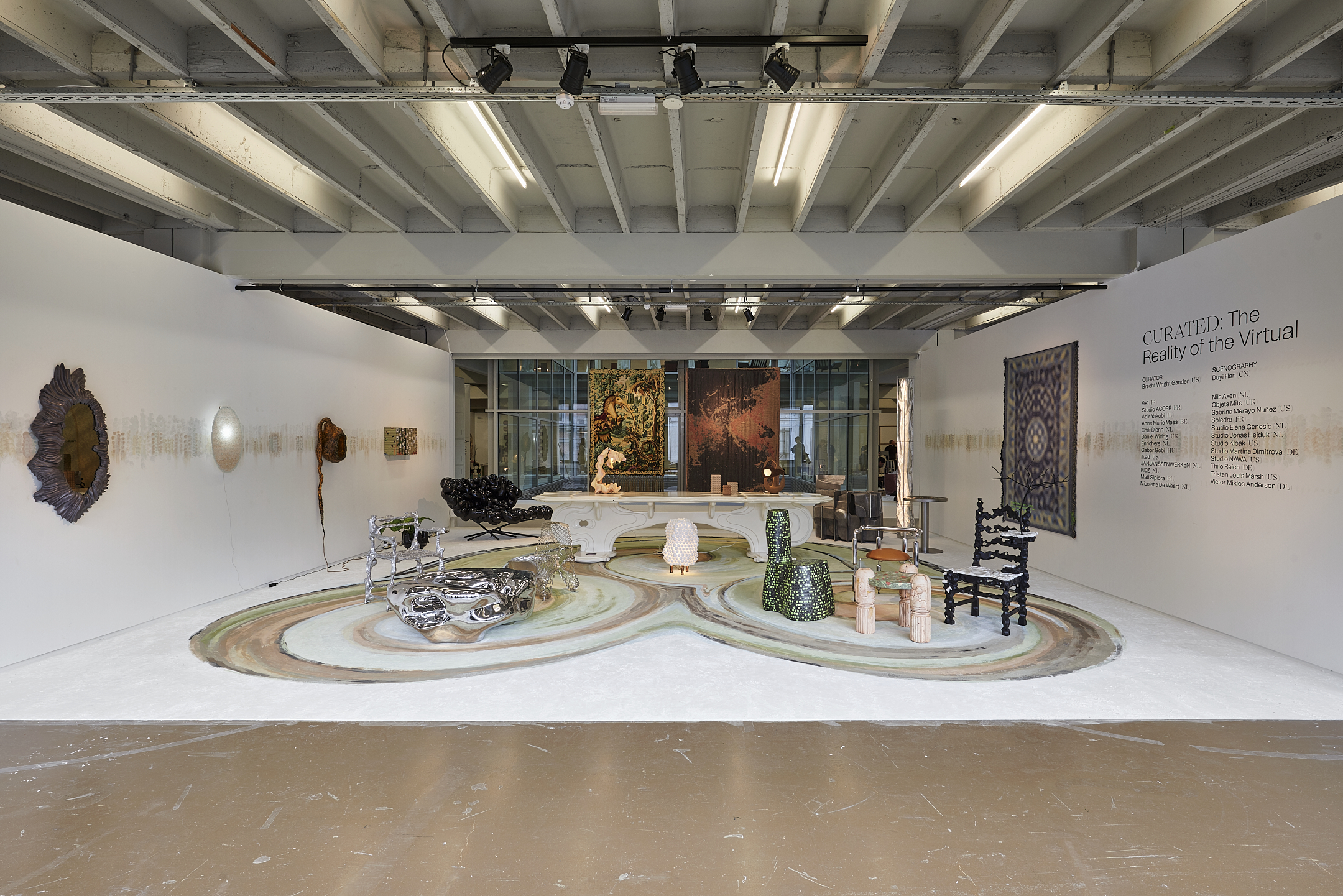
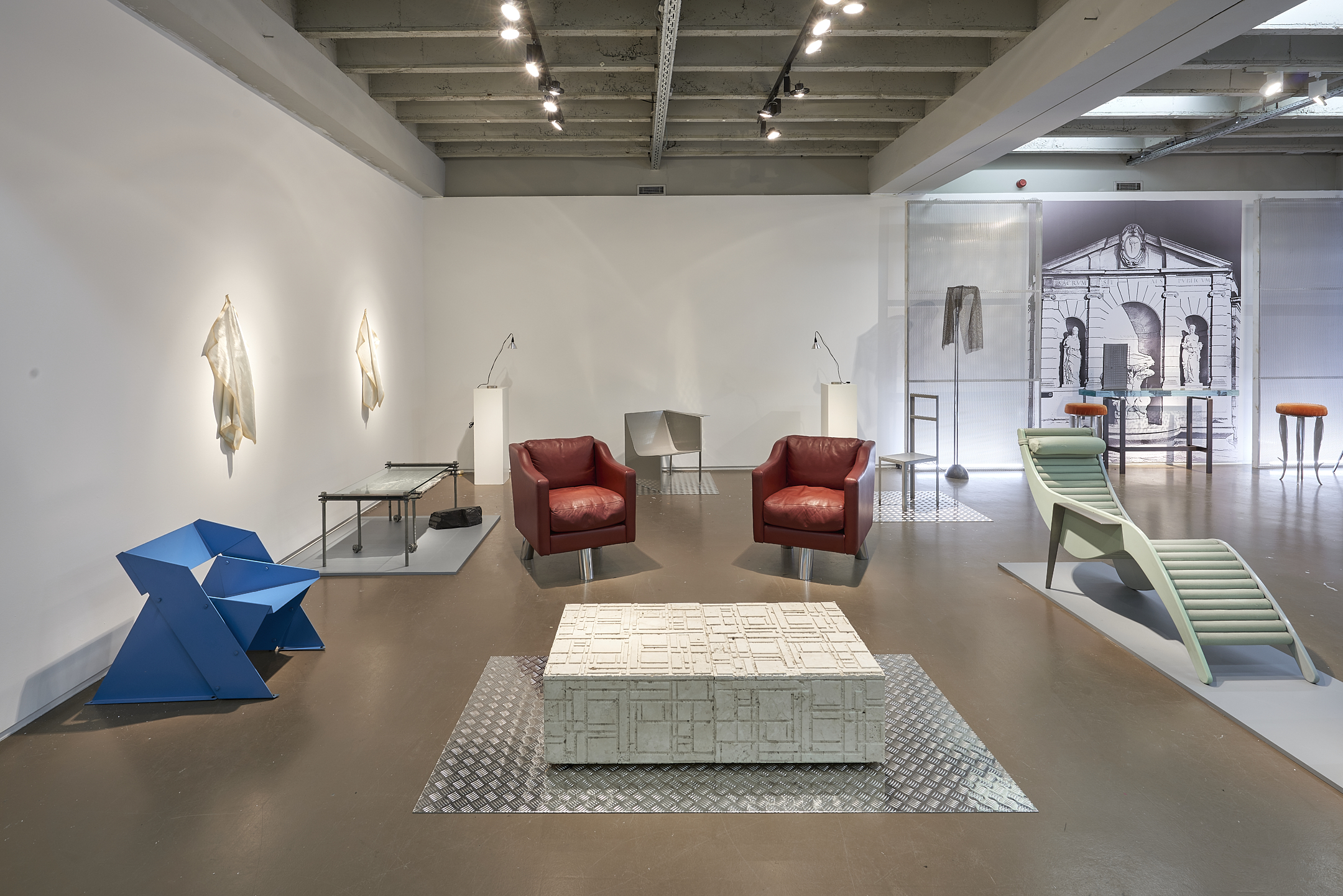
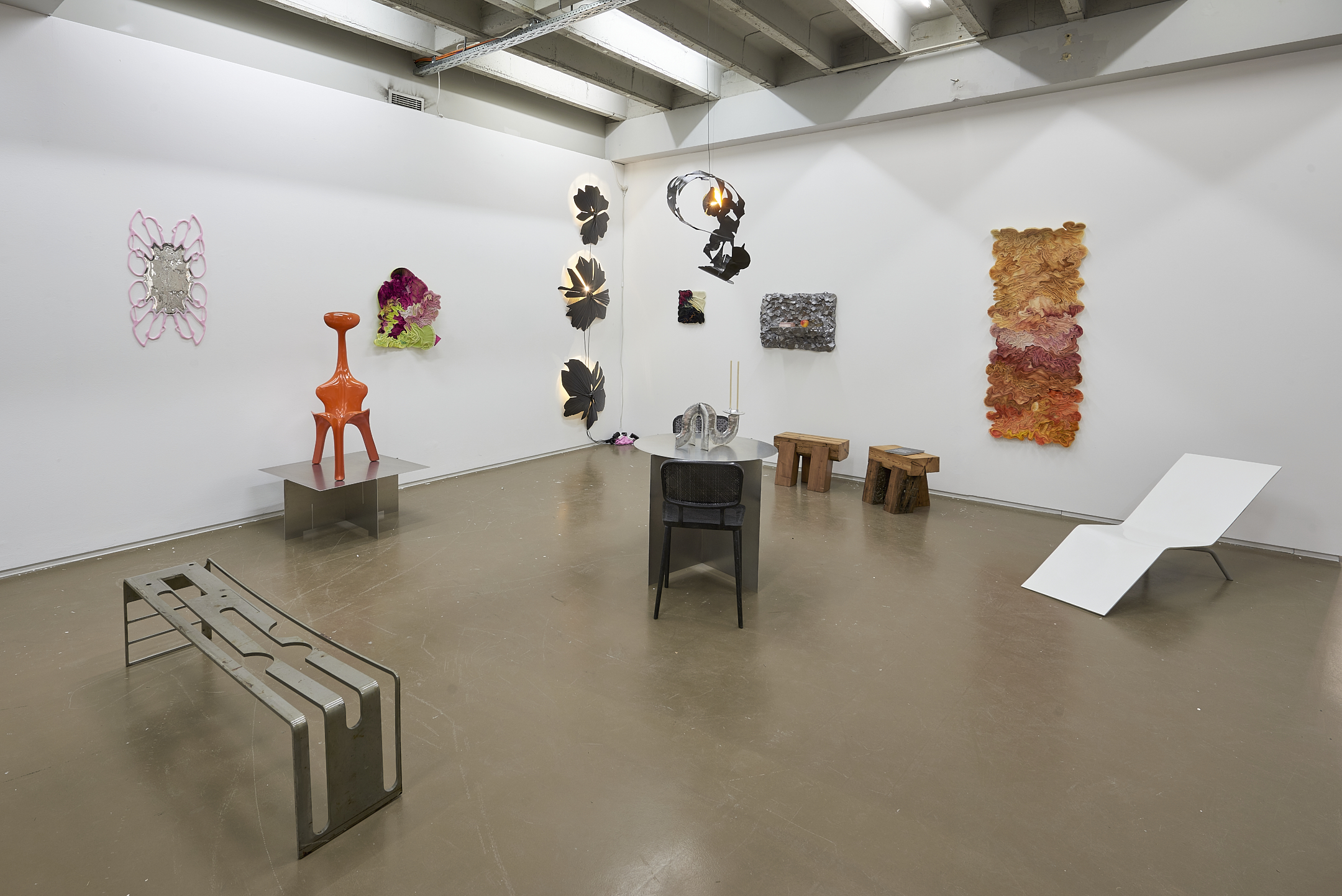
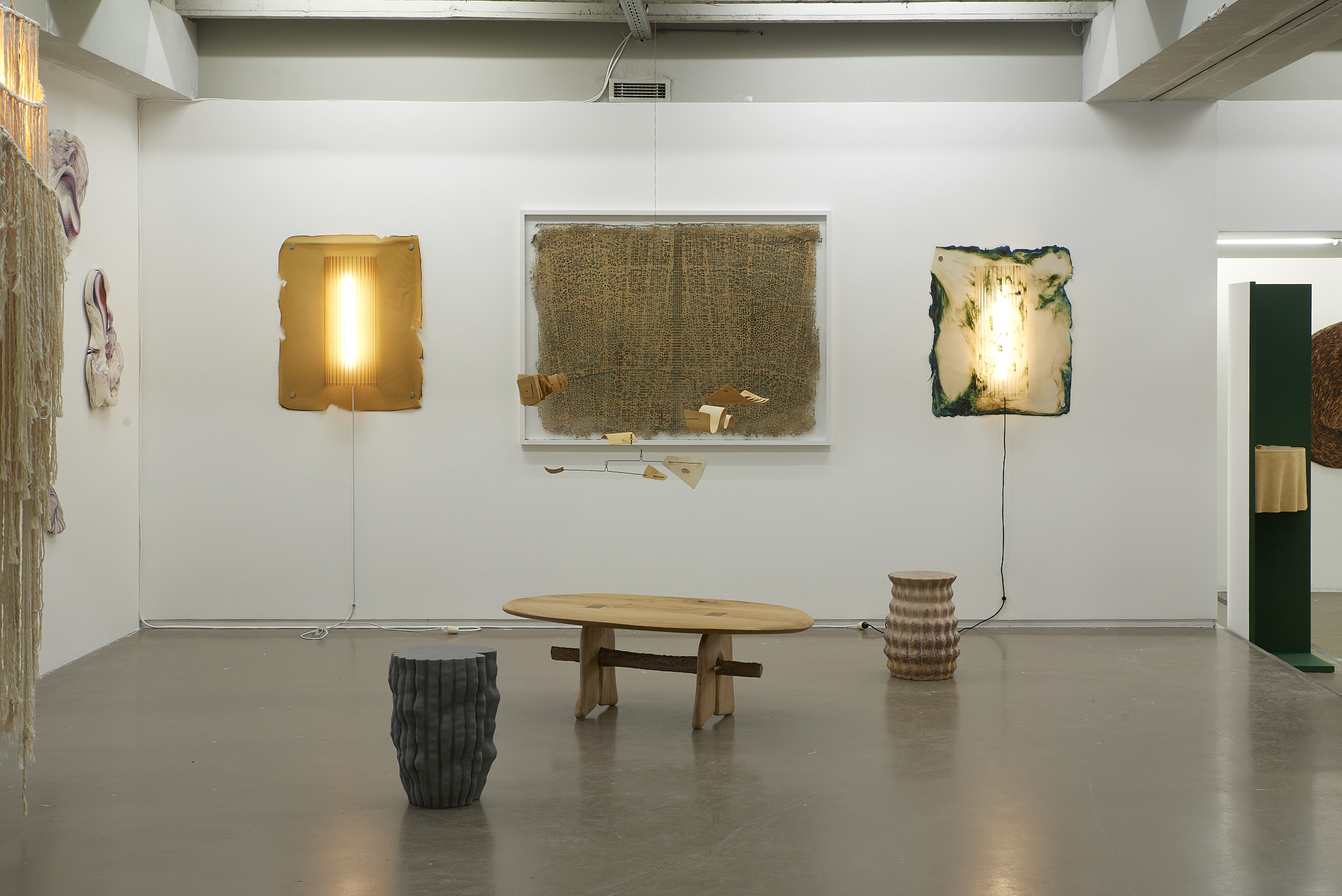
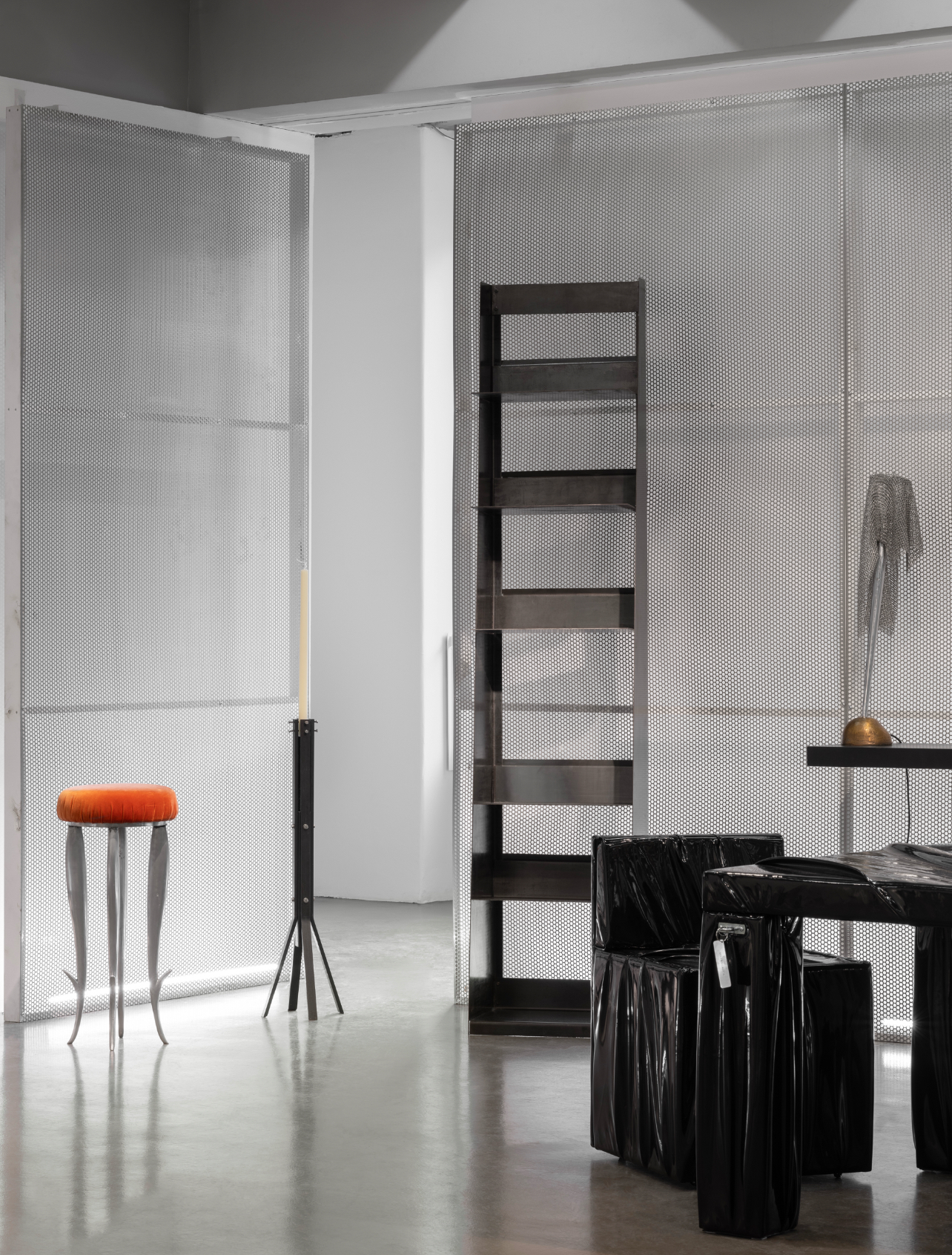
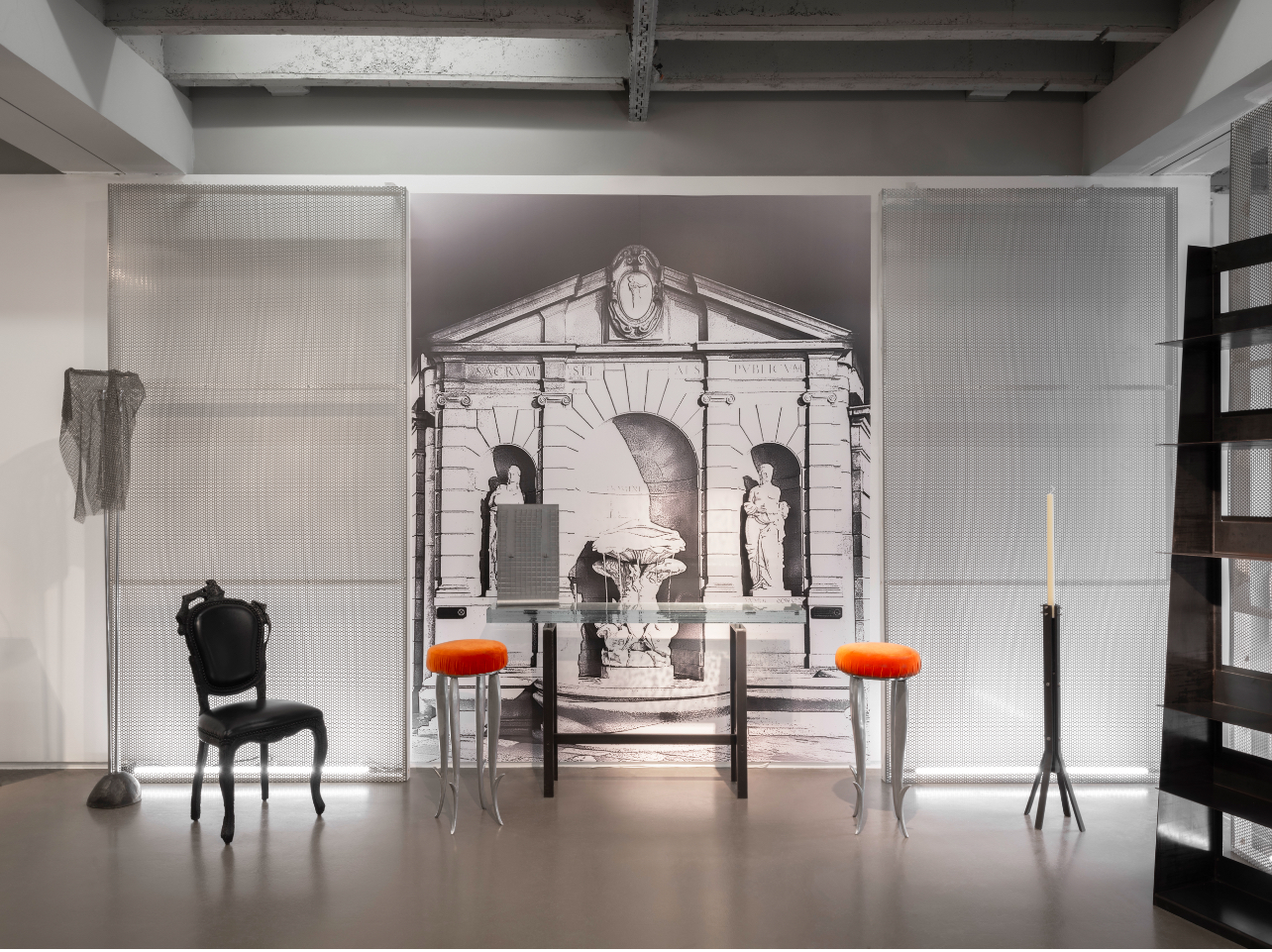
Geneva-based gallery Domum presented new pieces by Brazilian duo Palma, most notable of which was the egg shell in-layed Gambito Chair. As it has been for a few years now, pared back mono-material metal furnishings could also be found across the showcase. Within the entryway, French interior designer and scenographer Pauline Leprince created a perceptively prismatic installation out of upcycled denim procured from Belgian fashion house Bellerose and anchored by industrial-grade metal structures.
Welcoming over 20,000 visitors for its eighth edition, Collective fair has become an important sales point for local talents, those operating nearby and based around the world. Brussels’s centrality in Europe makes it an ideal place to mount such an event – but it's the city's openness to the new, the raw, and the speculative that truly sets the stage.
Adrian Madlener is a Brussels-born, New York-based writer, curator, consultant, and artist. Over the past ten years, he’s held editorial positions at The Architect’s Newspaper, TLmag, and Frame magazine, while also contributing to publications such as Architectural Digest, Artnet News, Cultured, Domus, Dwell, Hypebeast, Galerie, and Metropolis. In 2023, He helped write the Vincenzo De Cotiis: Interiors monograph. With degrees from the Design Academy Eindhoven and Parsons School of Design, Adrian is particularly focused on topics that exemplify the best in craft-led experimentation and sustainability.
-
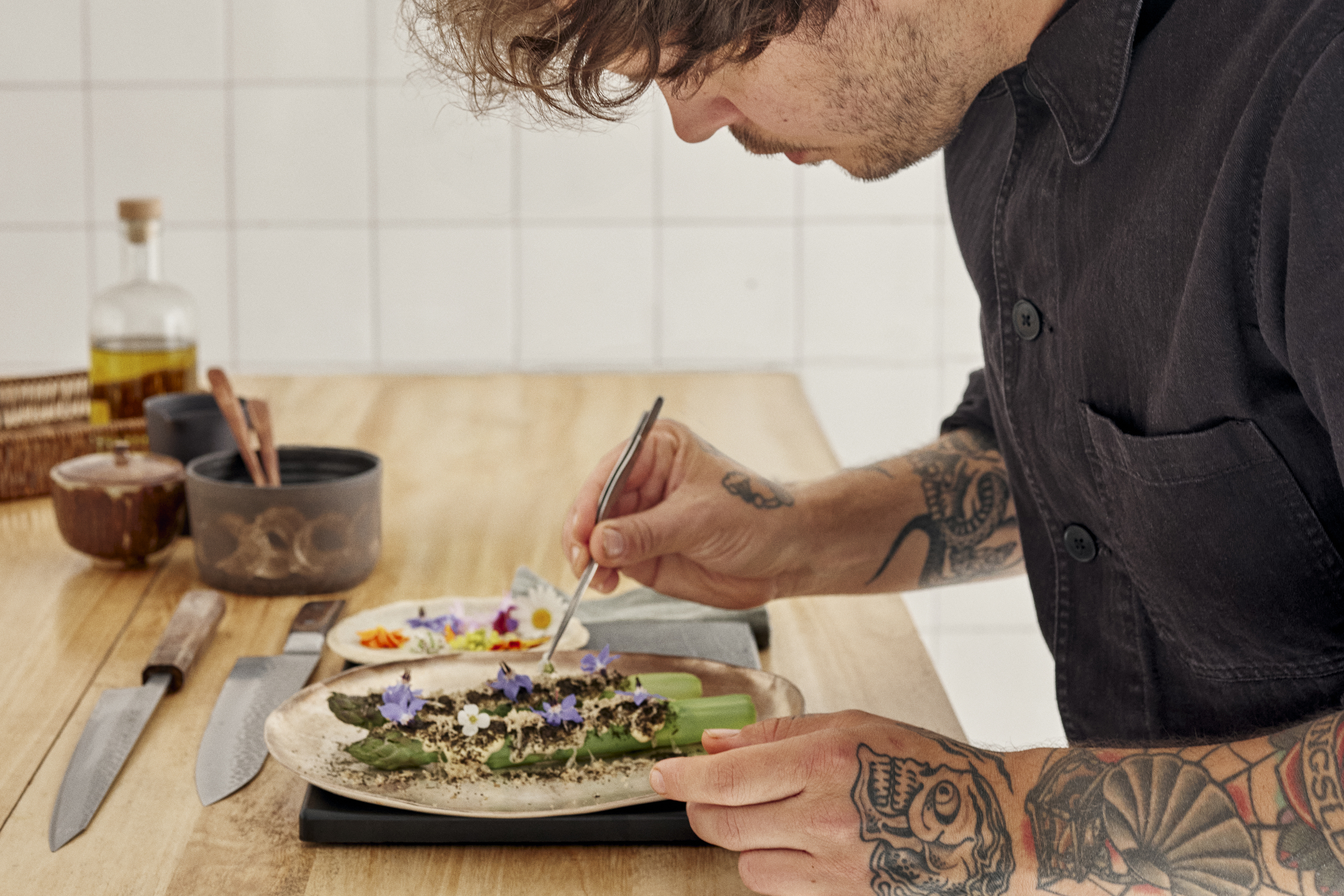 Exclusive: Airbnb’s next chapter as an all-encompassing lifestyle app
Exclusive: Airbnb’s next chapter as an all-encompassing lifestyle appThe home-booking app changed the travel game back in 2008 and now Airbnb is poised to do it again. CEO Brian Chesky talks us through the brand-new app
-
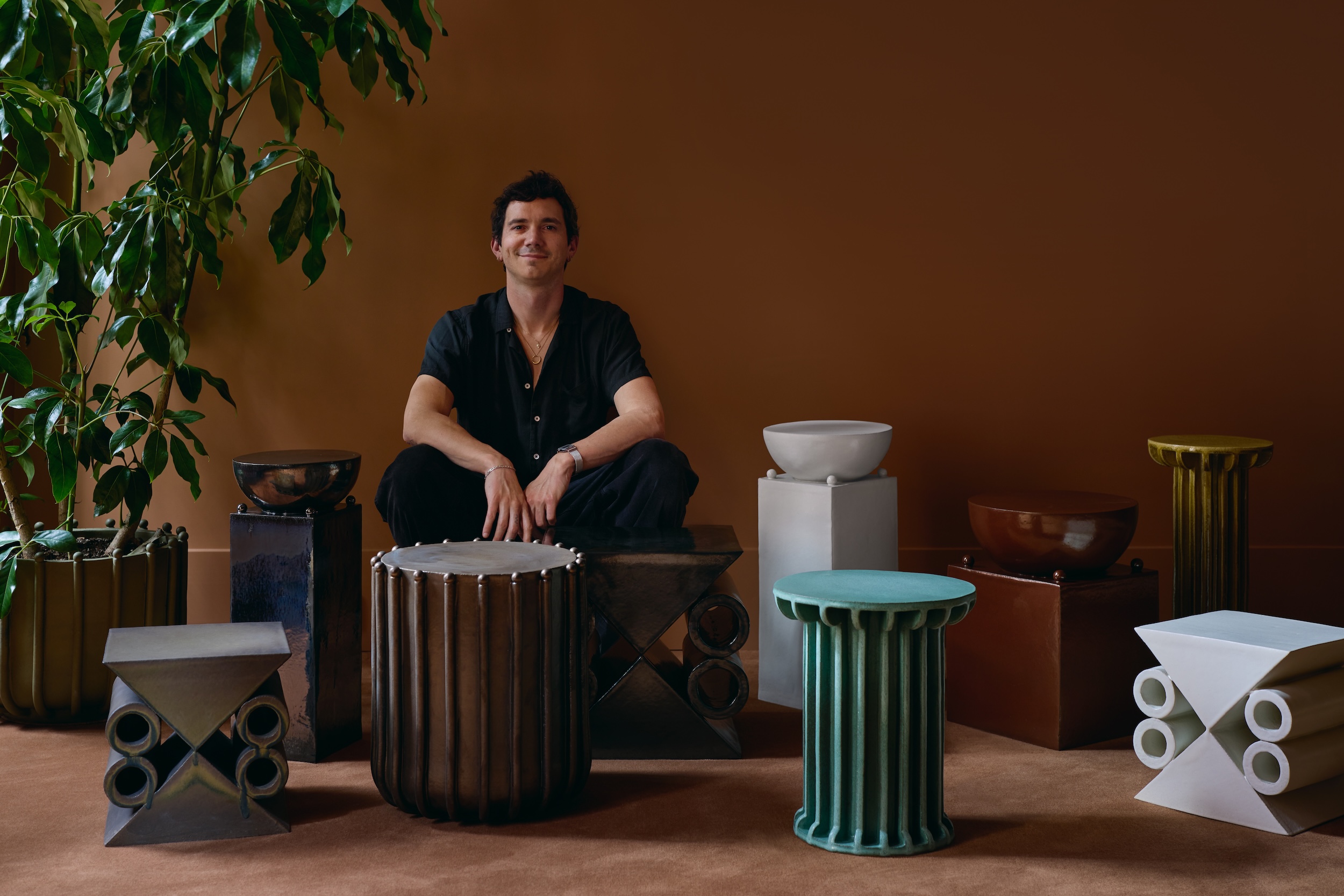 Yes, furniture can be ceramic. This artist is leading the way
Yes, furniture can be ceramic. This artist is leading the way'There’s a lot happening under the hood,' New York ceramicist Devin Wilde says of his sophomore collection.
-
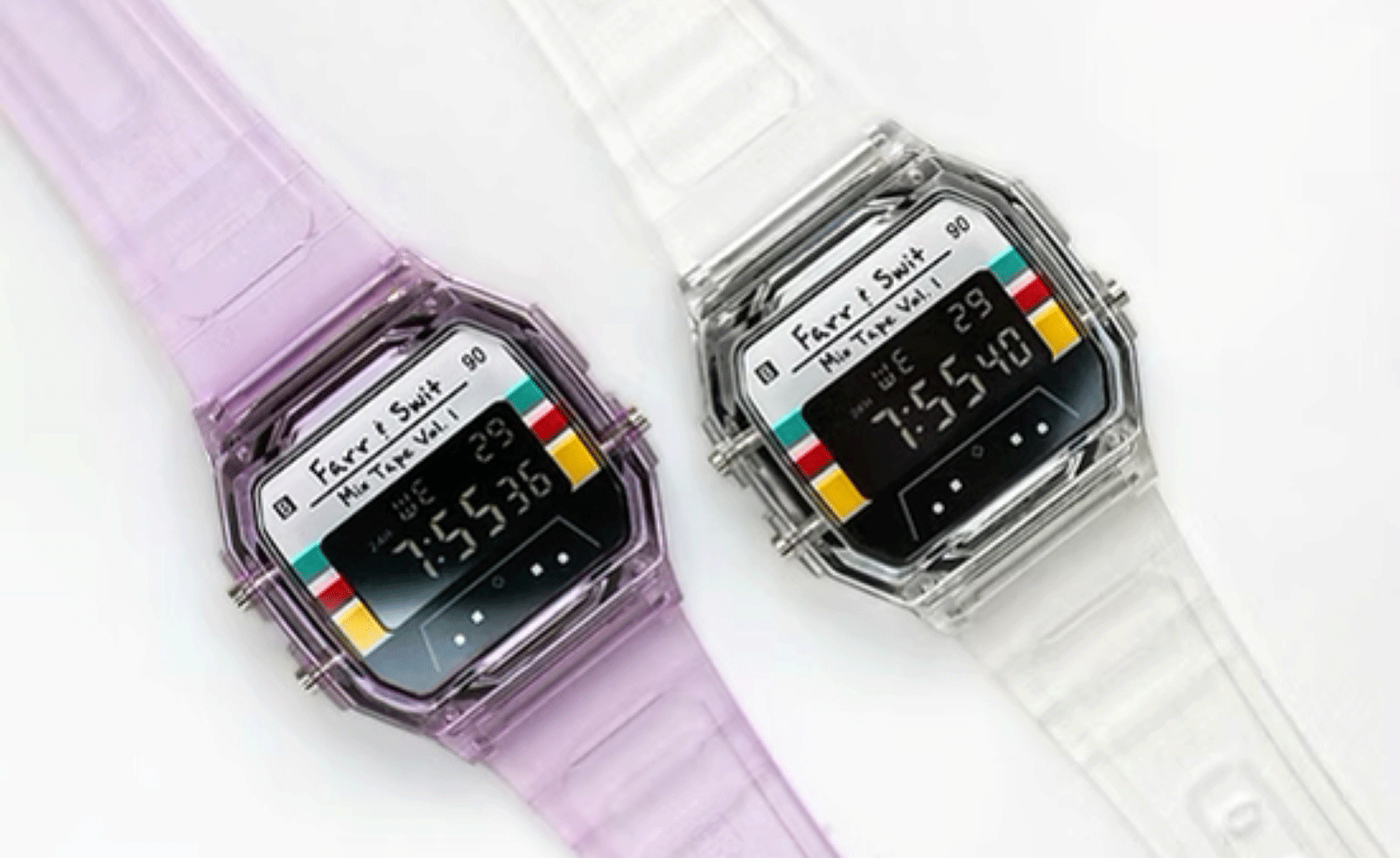 These fun, affordable digital watches are just the thing for summer time
These fun, affordable digital watches are just the thing for summer timeFrom a classic Casio to a colourful Autodromo, have fun with your wristwear with a playful digital watch
-
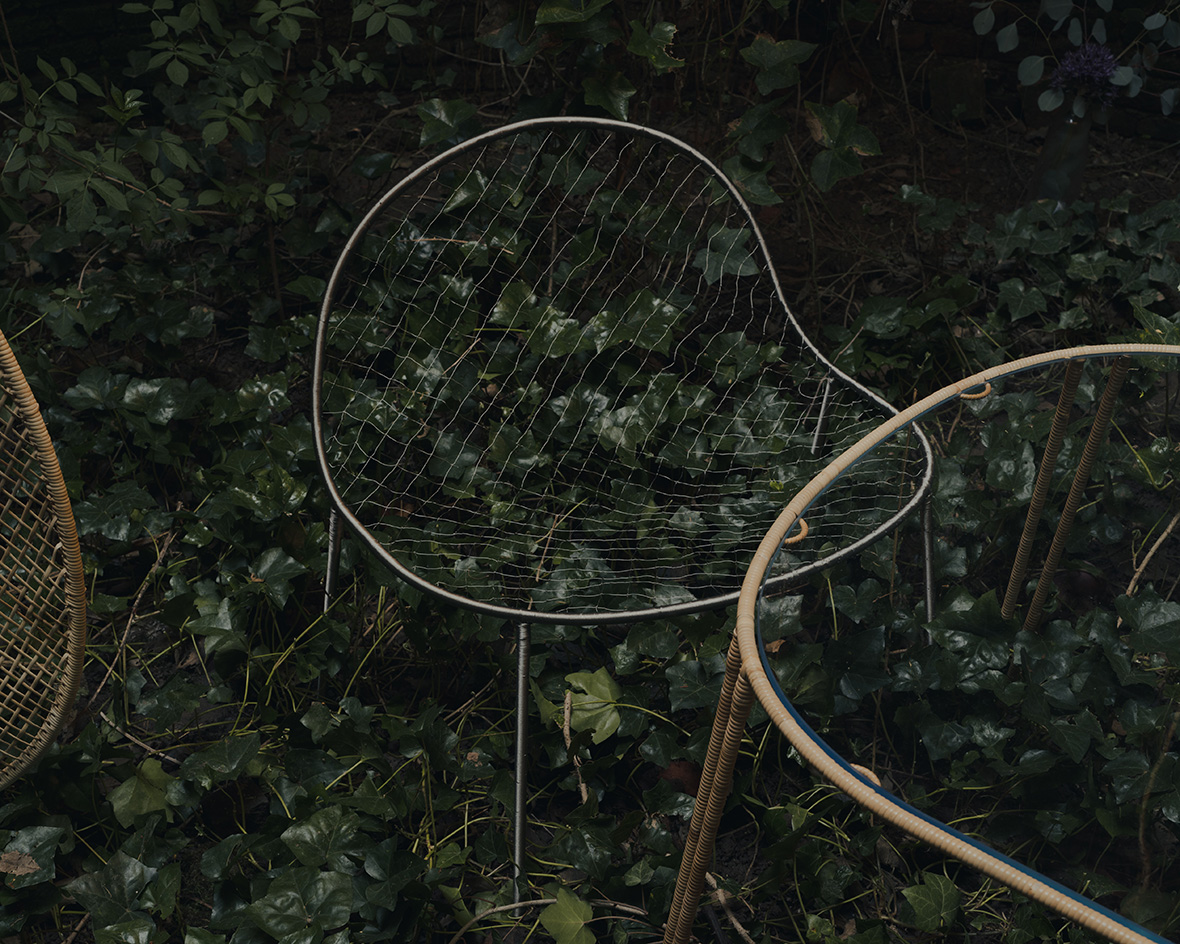 Junya Ishigami designs at Maniera Gallery are as ethereal as his architecture
Junya Ishigami designs at Maniera Gallery are as ethereal as his architectureJunya Ishigami presents new furniture at Maniera Gallery in Belgium (until 31 August 2024), following the series' launch during Milan Design Week
-
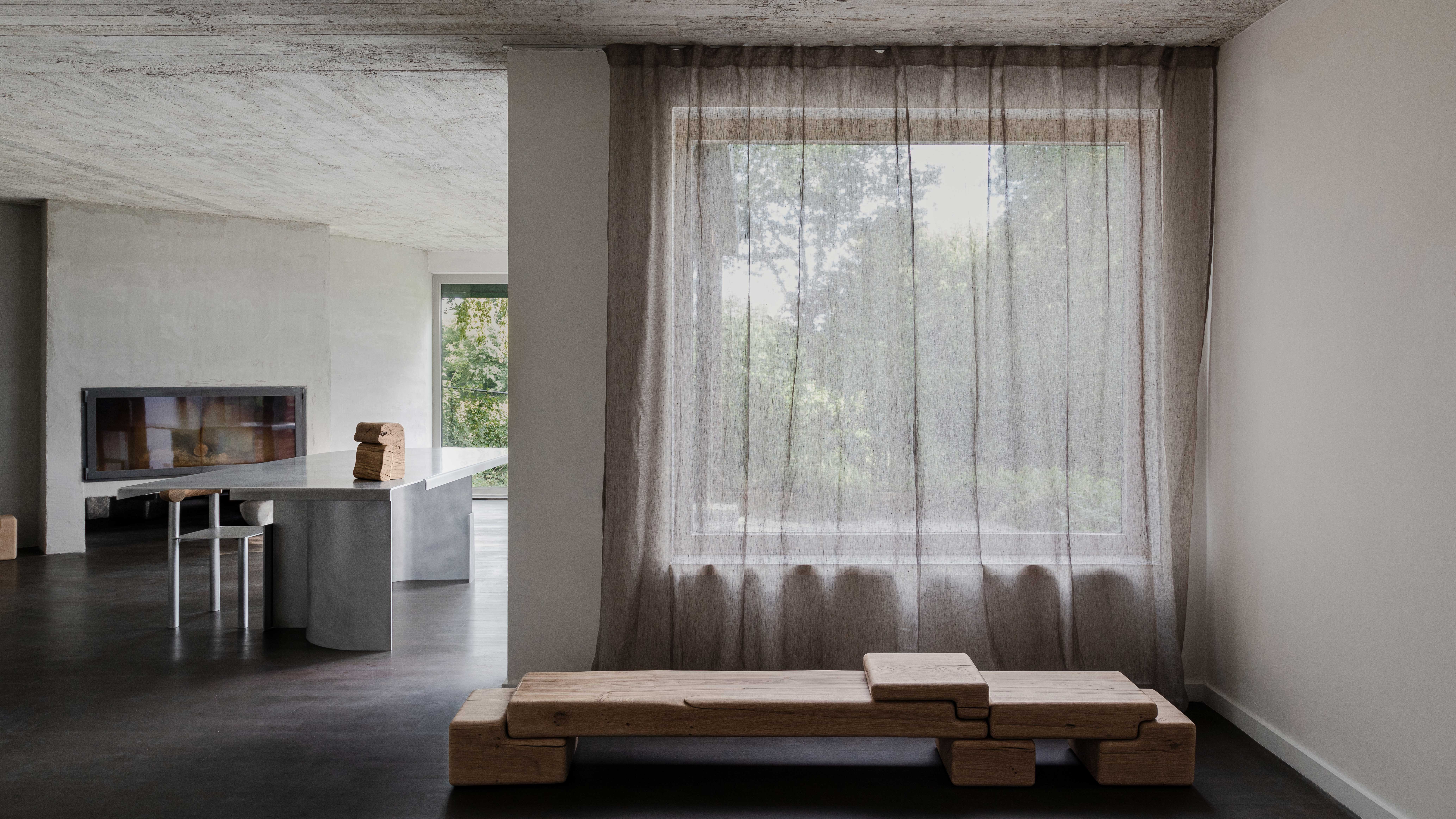 Linde Freya Tangelder’s new studio is a modernist haven
Linde Freya Tangelder’s new studio is a modernist havenDesigner Linde Freya Tangelder opens the doors to her new studio, inside a 1967 house by architect Jozef Lietaert in Asse, Belgium
-
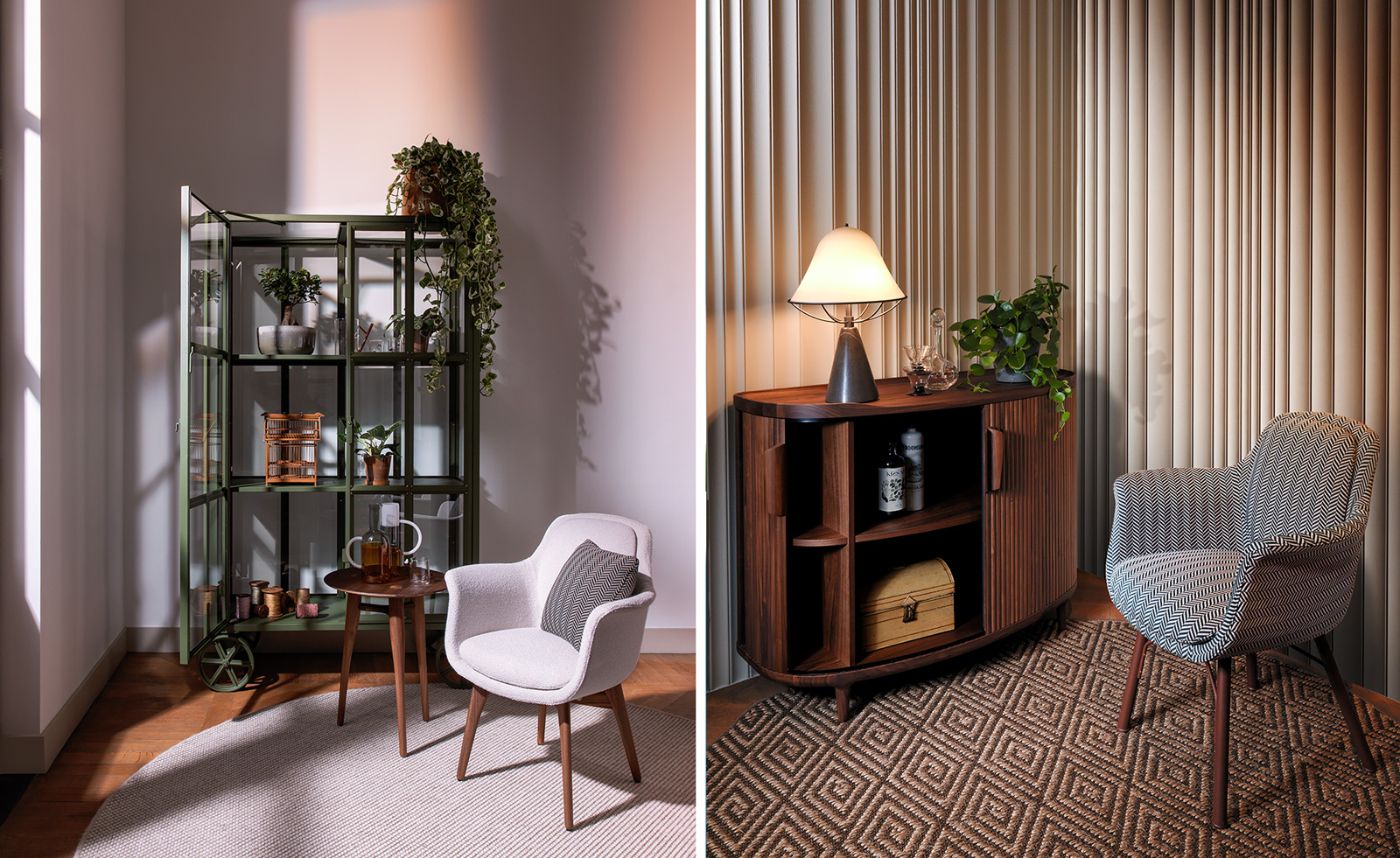 Discover Paardenmarkt 68, Belgium’s newest must-visit design spot
Discover Paardenmarkt 68, Belgium’s newest must-visit design spotPaardenmarkt 68 unites design brands including Revised, Wool & Wire and Gemla in one retail destination
-
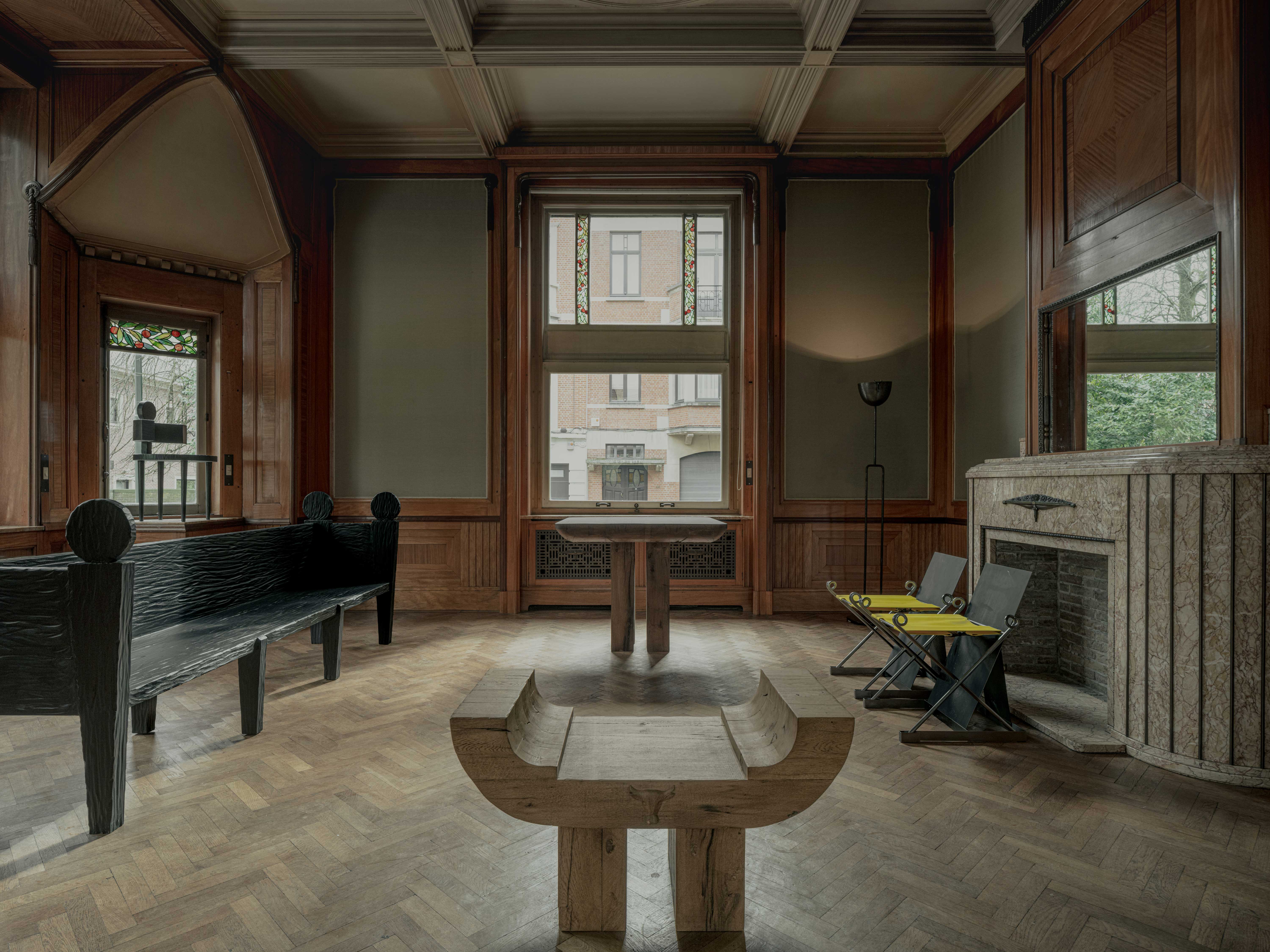 Welcome to Hôtel Maniera, the design gallery’s new outpost in historical Villa Danckaert
Welcome to Hôtel Maniera, the design gallery’s new outpost in historical Villa DanckaertBelgian design gallery Maniera unveils its new location, inside historical Villa Danckaert with an inaugural group show on display until 6 May 2023
-
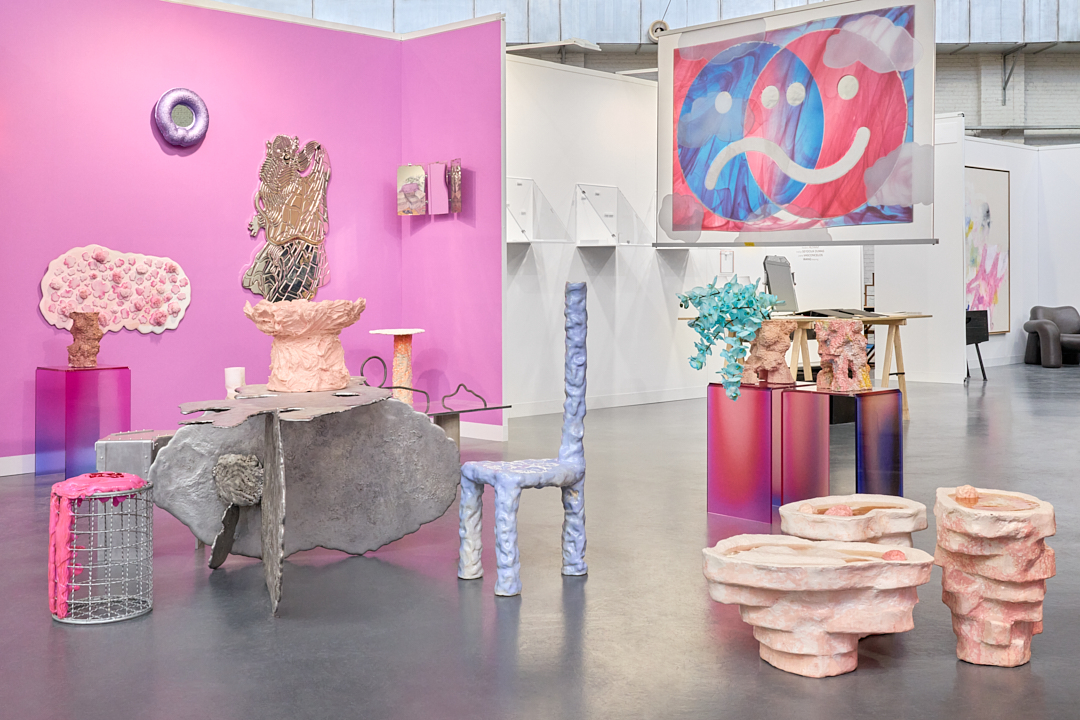 Collectible Brussels: highlights from the 2023 edition
Collectible Brussels: highlights from the 2023 editionUntil Sunday 12 March 2023, Collectible Brussels attracts collectors to the Tour & Taxis Sheds with a curated offering of unique and limited-edition pieces by established designers and emerging studios
-
 Antwerp gains a sanctuary of silence inside a 19th century cove
Antwerp gains a sanctuary of silence inside a 19th century coveDesign practice Studio Corkinho launches Still Room, a multi-purpose space inside Noorderpershuis, a 19th century piece of colossal brick architecture. We delve into inspiration behind its design with co-founder Cedric Etienne
-
 The magic mushrooms of ceramic artist Jos Devriendt offer a sculptural trip
The magic mushrooms of ceramic artist Jos Devriendt offer a sculptural trip